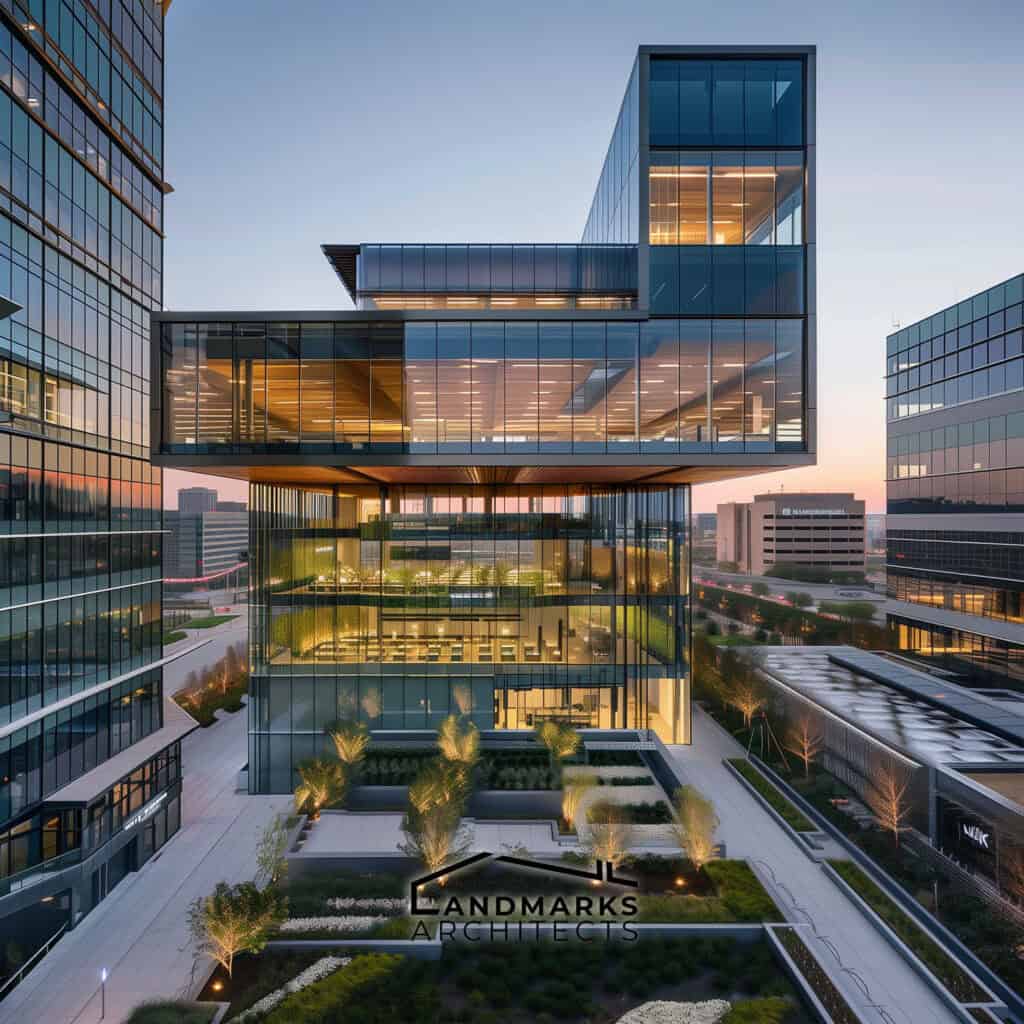
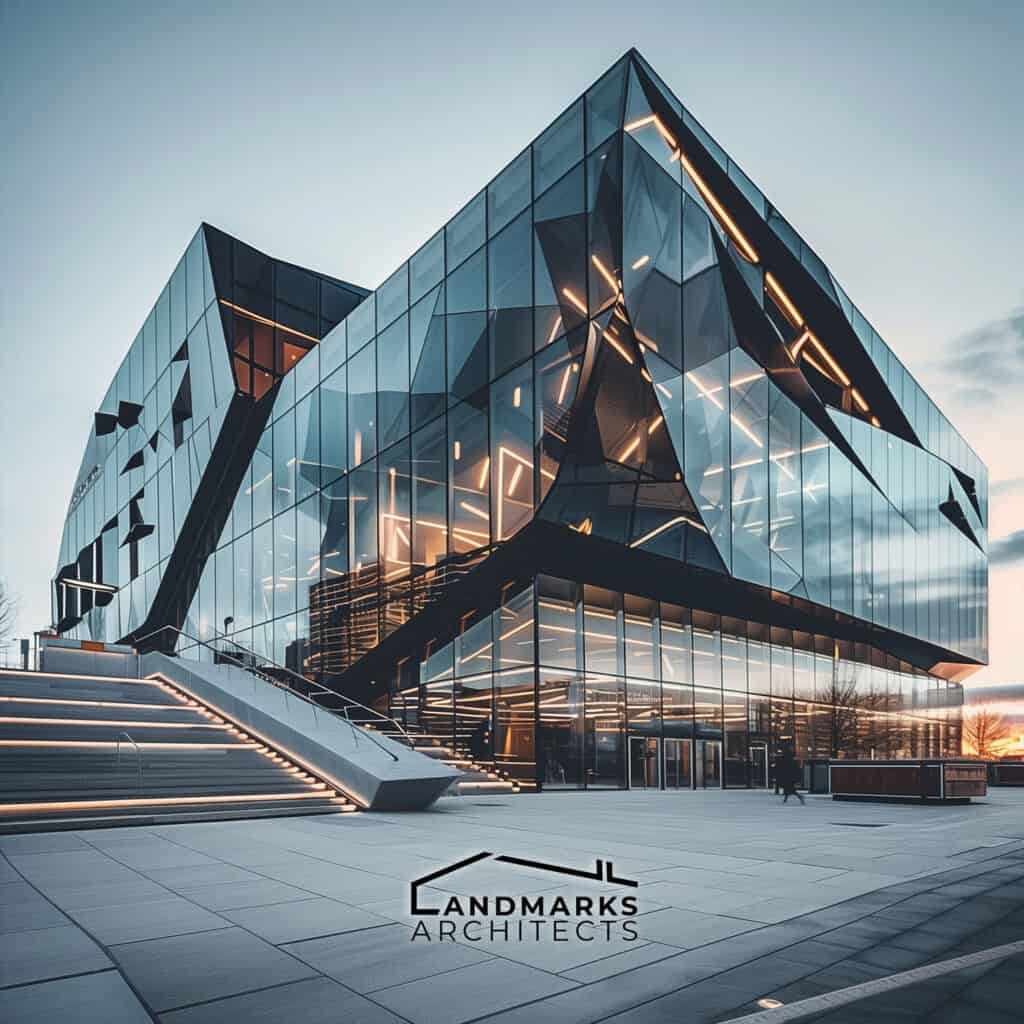
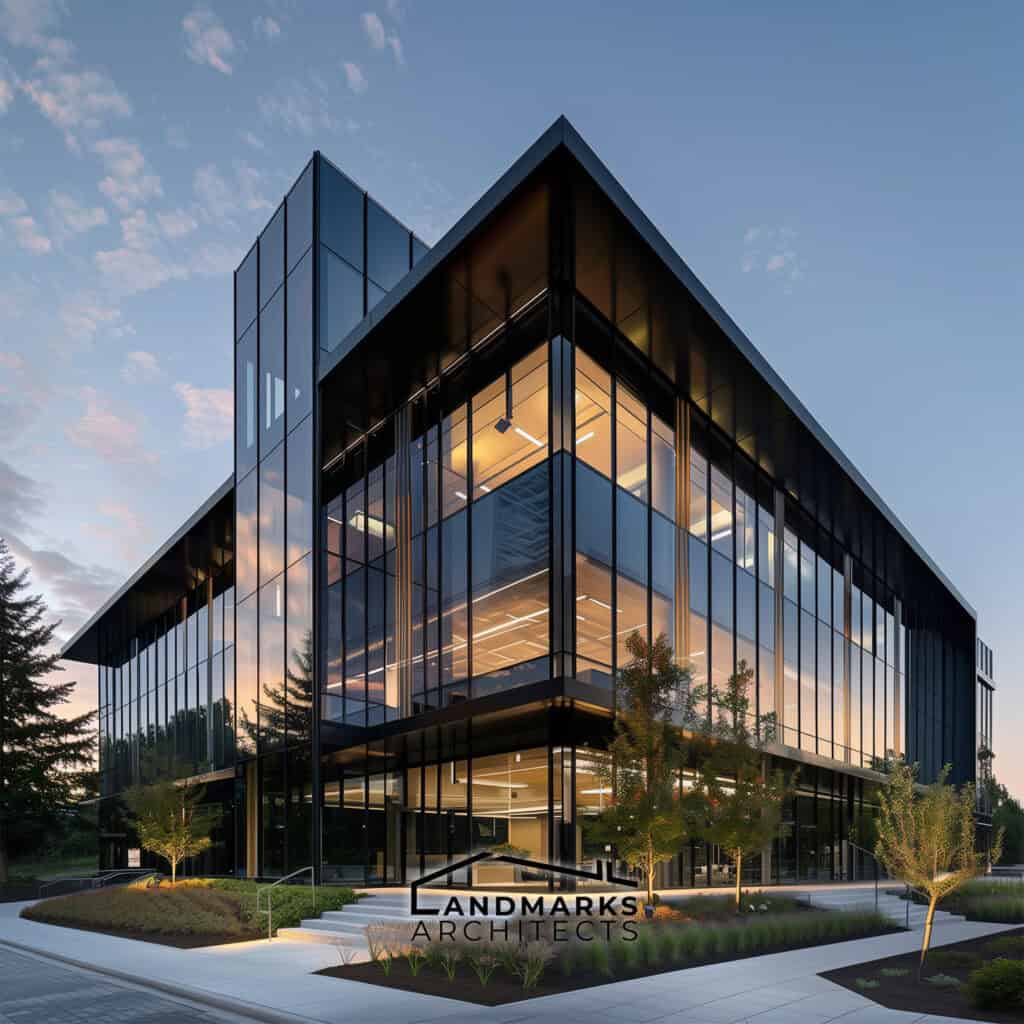
Are you looking to make your commercial space truly remarkable? In today’s world, innovative and sustainable design is crucial. As a business owner or developer, you face the challenge of creating spaces that are both functional and visually appealing.
At Landmarks Architect, we specialize in exploring cutting-edge commercial architecture. Our insights help you transform spaces to meet modern standards of sustainability and design excellence.
In this article, you’ll discover:
- Sustainable Architecture: Integrating natural lighting, green roofs, and sustainable materials.
- Smart Building Technologies: Enhancing functionality and energy efficiency.
- Flexible Office Spaces: Adapting layouts for creativity and collaboration.
- Innovative Retail Concepts: Creating sustainable, engaging environments.
- Mixed-Use Developments: Combining residential, commercial, and leisure spaces.
- Biophilic Design: Enhancing well-being through nature integration.
- Adaptive Reuse: Transforming existing structures sustainably.
- Minimalist Aesthetics: Embracing simplicity and functionality.
- Iconic Cultural Spaces: Designing landmarks that foster community.
- Luxury Hospitality Design: Elevating guest experiences sustainably.
Ready to transform your commercial space? Explore the ideas that align with your vision.
1. Sustainable Architecture
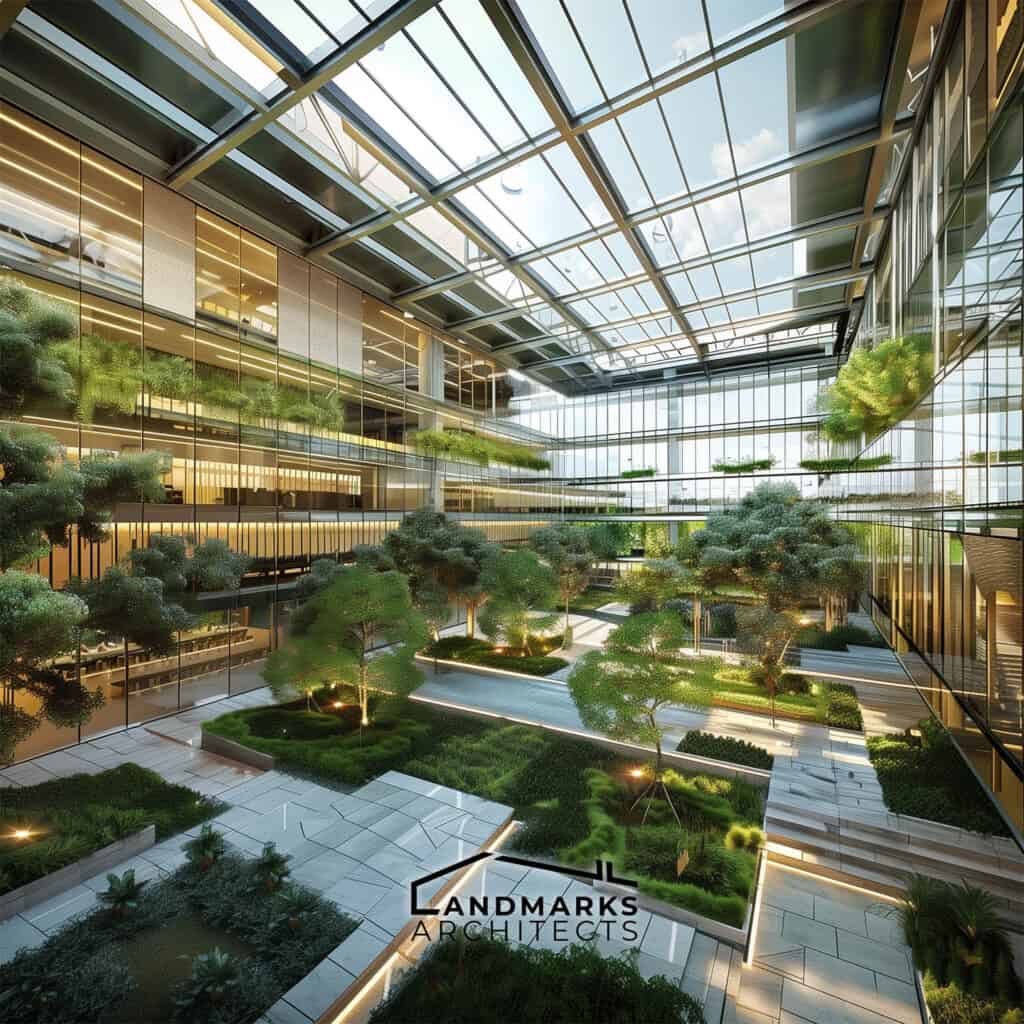
Sustainable architecture is pivotal in modern commercial architecture, with many commercial architects incorporating sustainable design principles to create functional, energy-efficient, and aesthetically pleasing spaces. These designs positively impact the well-being of employees and customers by using natural lighting, green roofs, and landscaped courtyards to enhance natural light and reduce energy consumption.
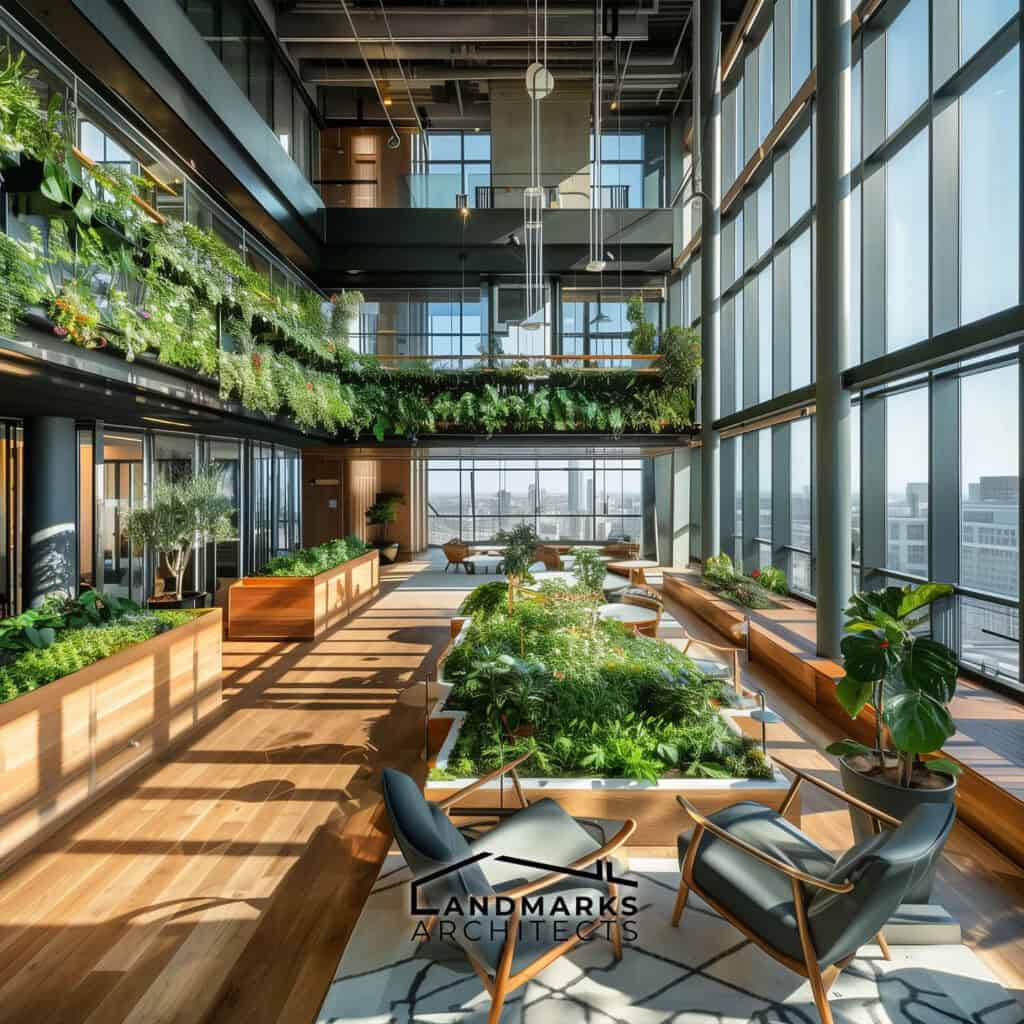
Emerging trends include using new technologies for greater flexibility in energy-efficient designs. Large windows and glass facades increase natural light, while sustainable building materials like stone and wood improve efficiency. Breakout areas, rooftop gardens, and nature-inspired interior designs provide respite from work, boosting productivity, creativity, and well-being.
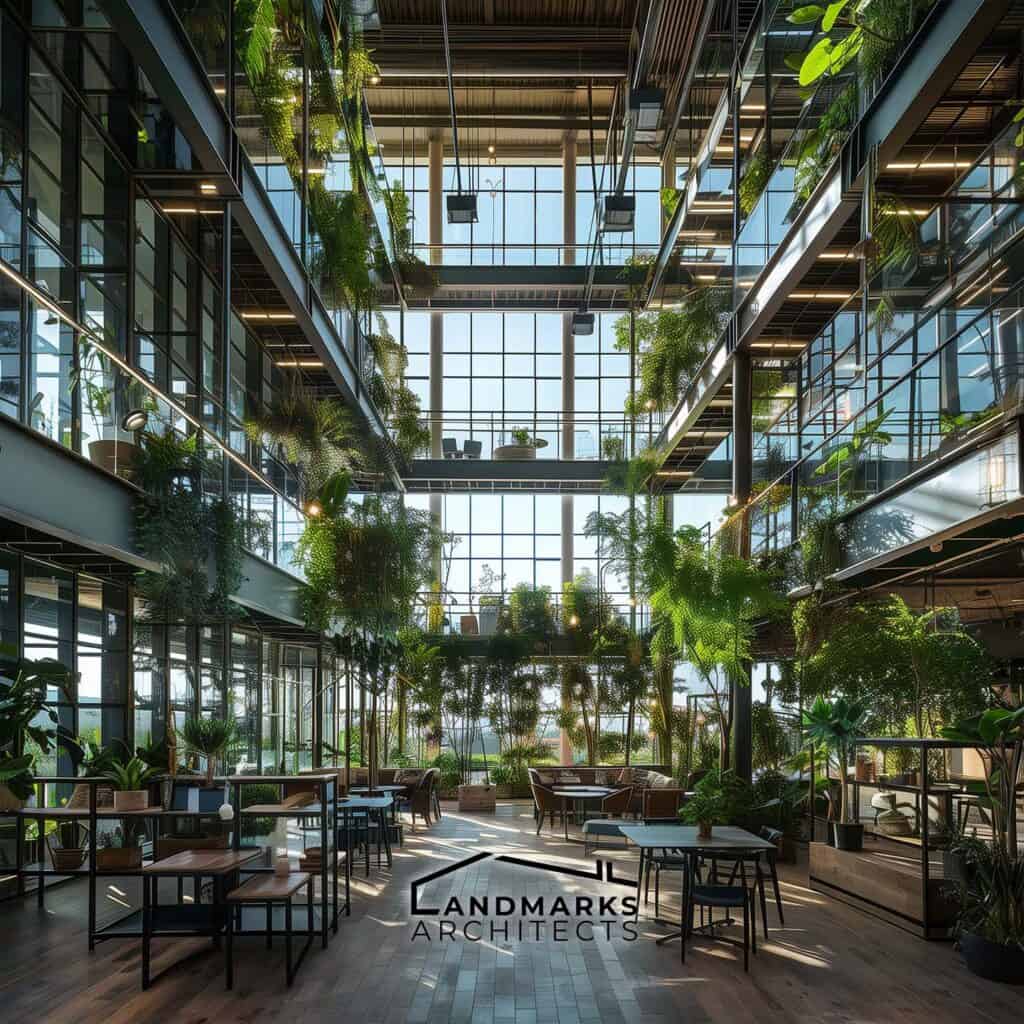
Sustainable architecture is essential for any commercial project and is expected to continue growing. By incorporating the latest trends and technologies, architects and designers can create commercial spaces that are both efficient and aesthetically pleasing, benefiting the environment and enhancing everyday life.
2. Smart Building Technologies
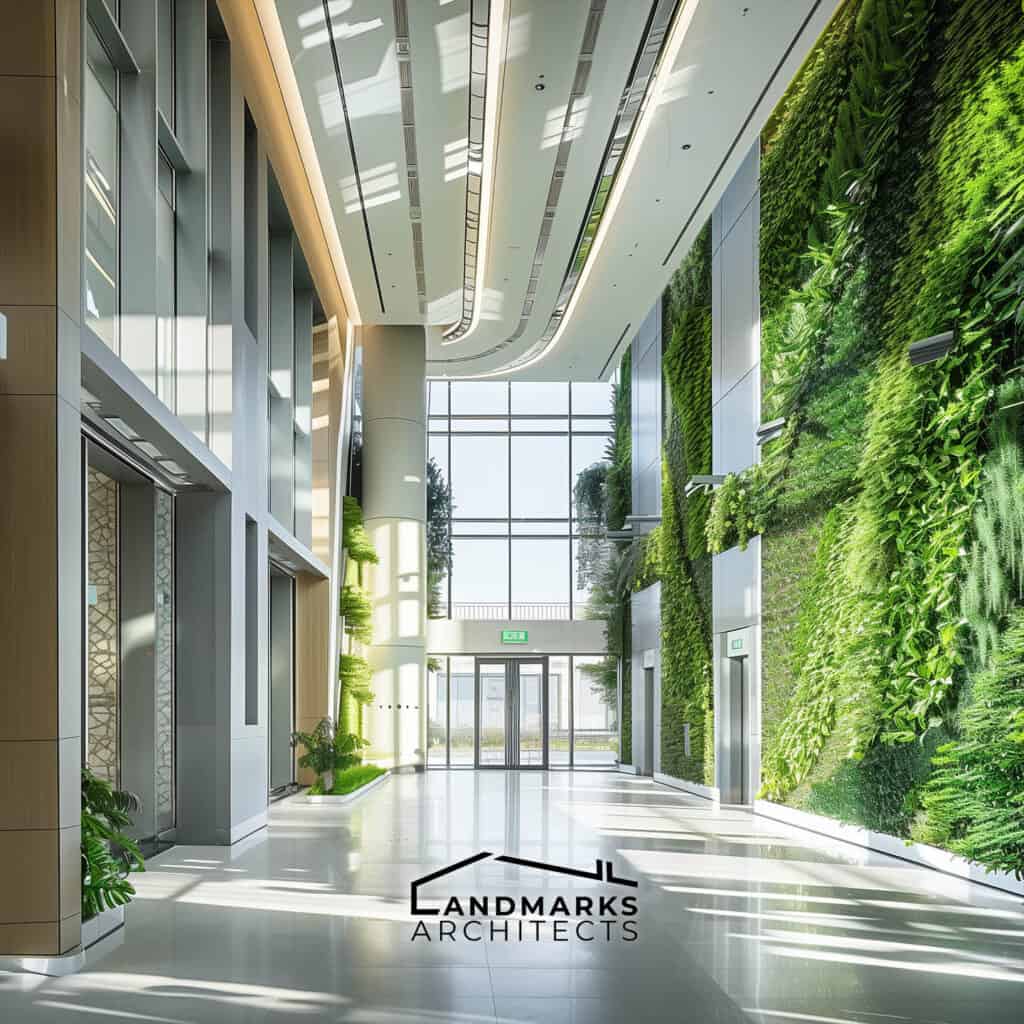
In modern commercial architecture, smart building technologies are revolutionizing space design with a focus on functionality, energy efficiency, and aesthetic appeal. Architects integrate systems like access control, smart water management, and energy-efficient lighting to enhance employee well-being and productivity.
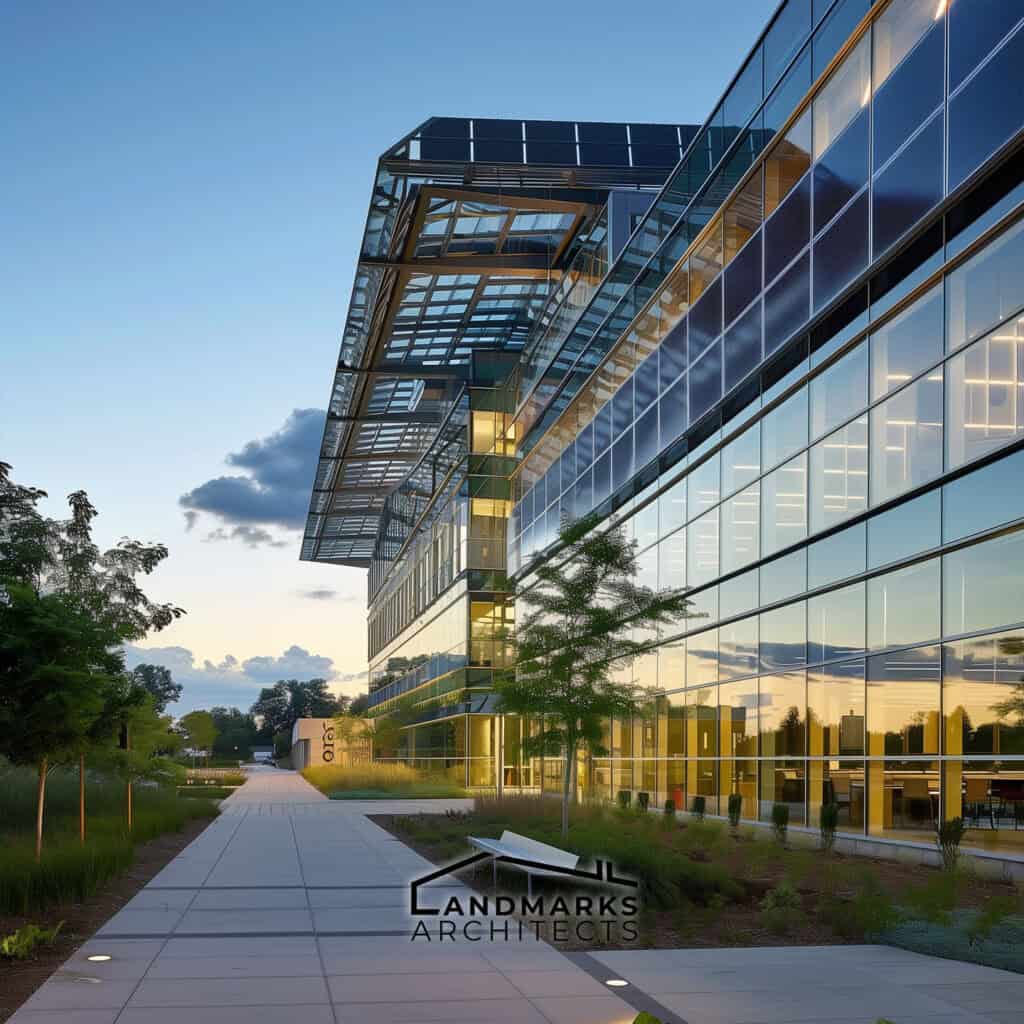
Incorporating features such as large windows for natural lighting, green roofs, and landscaped courtyards not only reduces energy consumption but also creates visually appealing and sustainable commercial spaces. Technologies like solar panels and advanced HVAC systems further promote sustainability by minimizing energy use.
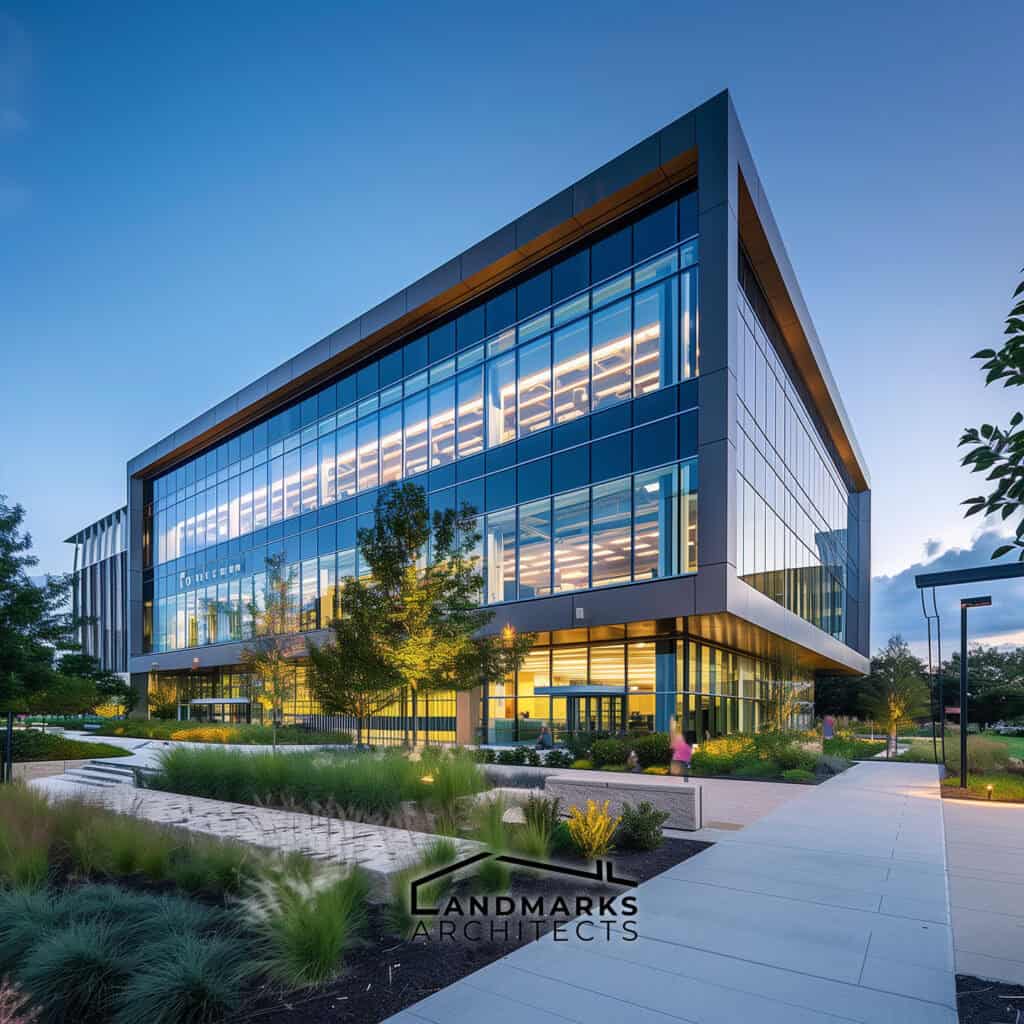
Overall, these innovations are reshaping commercial architecture, making spaces more efficient, flexible, and conducive to business success while prioritizing environmental responsibility and employee satisfaction.
3. Flexible Office Spaces

Flexible office spaces are an emerging trend in modern commercial architecture. Architects design these spaces to be functional and aesthetically pleasing, meeting the needs of businesses and employees. Key features include large windows, natural lighting, breakout areas, and mixed-use buildings, all contributing to improved productivity and well-being. Green roofs and landscaped courtyards also bring nature into the built environment.
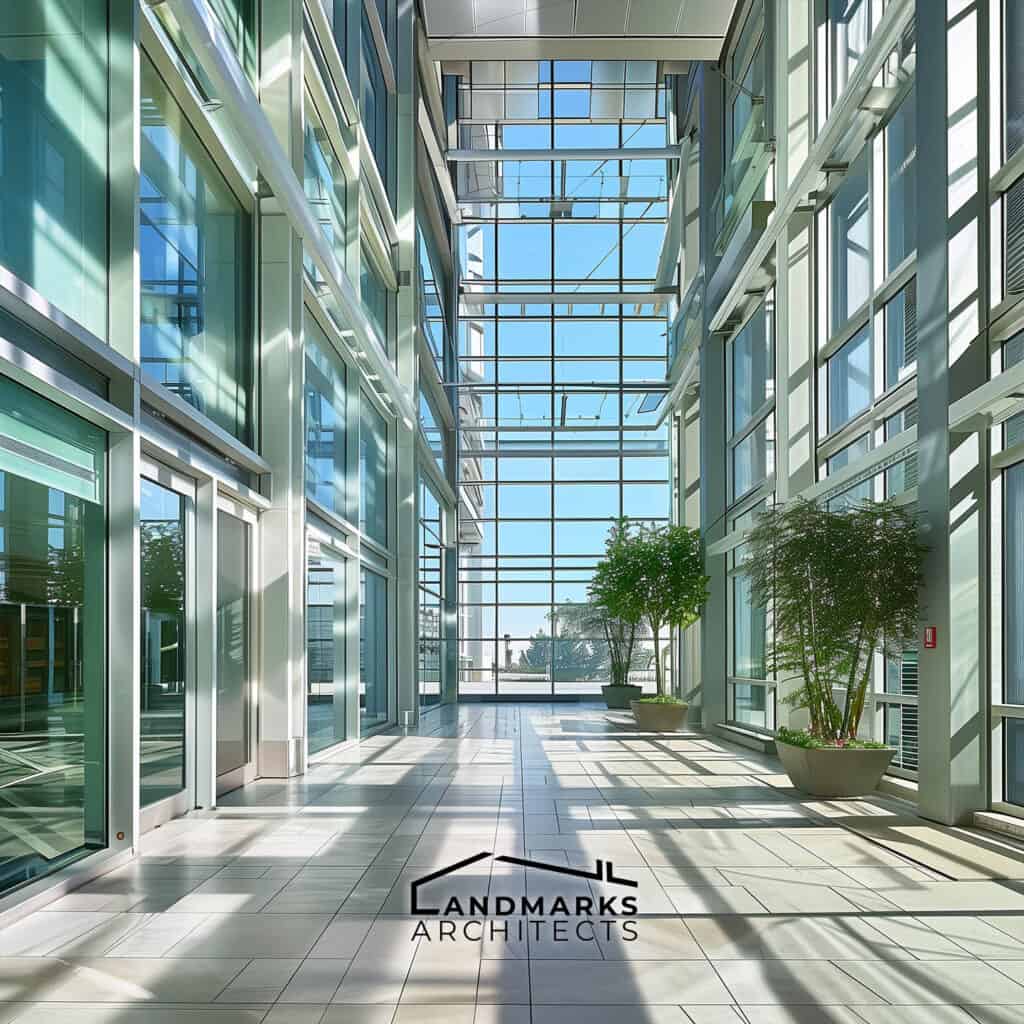
Technology plays a crucial role in enhancing flexibility. Energy-efficient designs, sustainable materials, and solar panels help reduce energy consumption and increase natural light. The use of glass and stone in modern commercial buildings has inspired new interior design and architectural ideas.
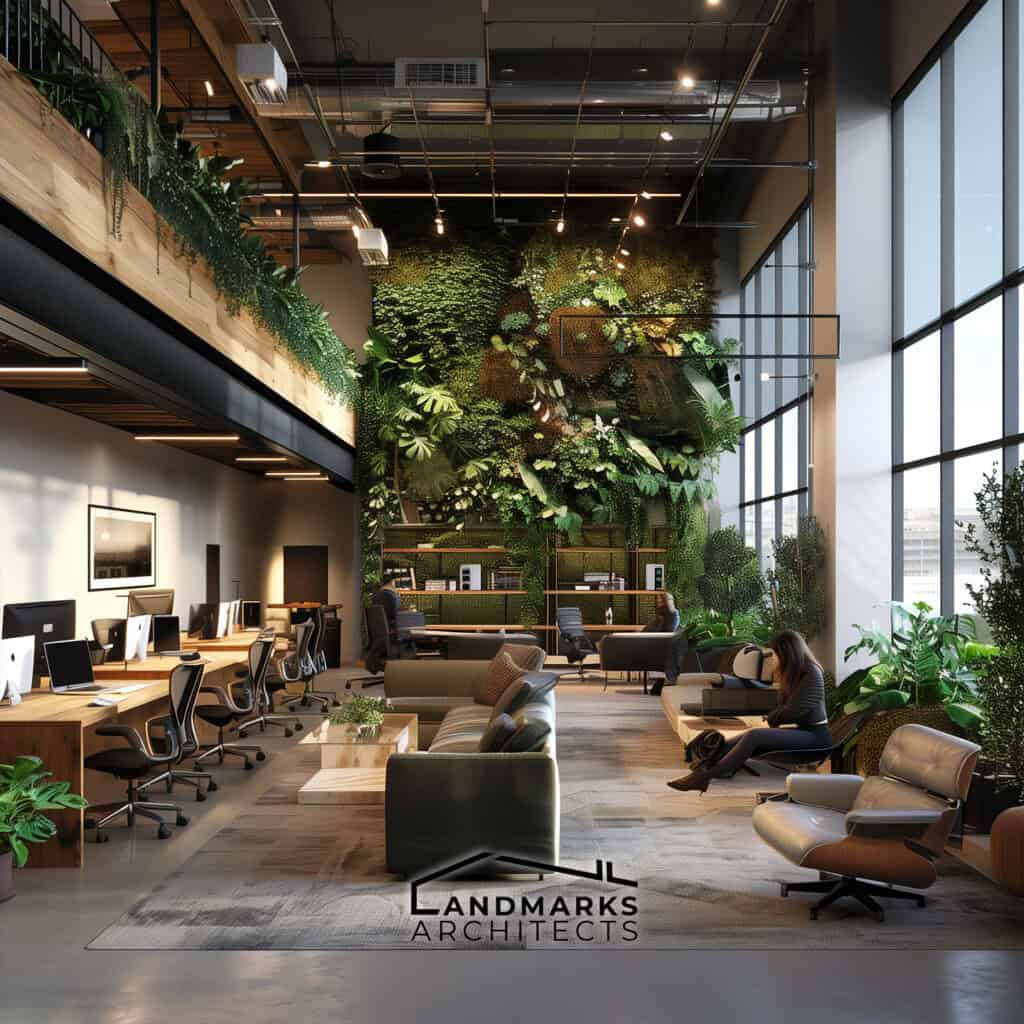
Flexible office spaces allow businesses to create customized work environments. By integrating the latest trends and technologies, commercial architects can design efficient, sustainable buildings that offer employees spaces for work, collaboration, and relaxation.
4. Innovative Retail Concepts
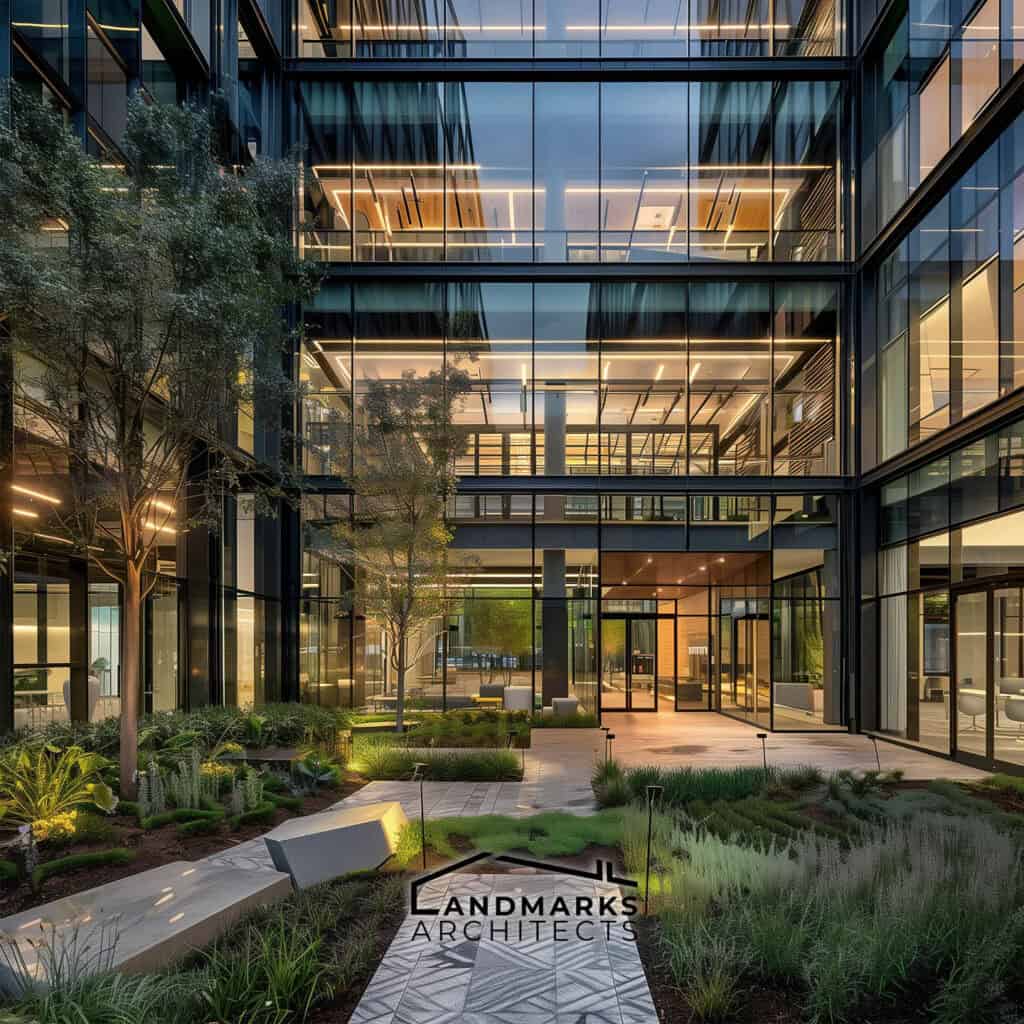
Architects of modern commercial design continuously seek new ideas to create functional, aesthetically pleasing spaces that positively impact everyday life. A key trend in commercial architecture is the use of natural lighting to reduce energy consumption and create inviting atmospheres. Large windows, green roofs, and landscaped courtyards are commonly incorporated to bring nature into the built environment.
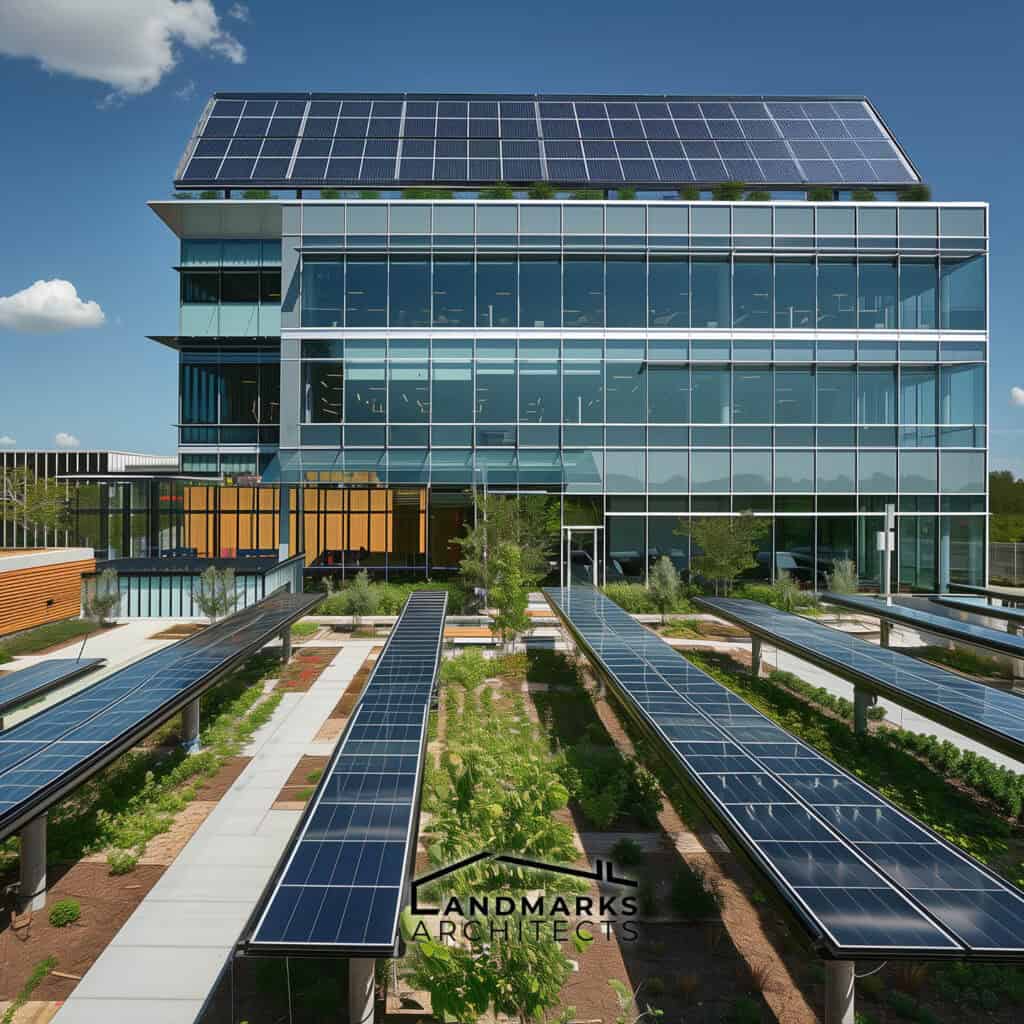
Emerging technologies also play a crucial role. Solar panels are used to enhance energy efficiency, while breakout areas and rooftop gardens promote well-being and productivity.
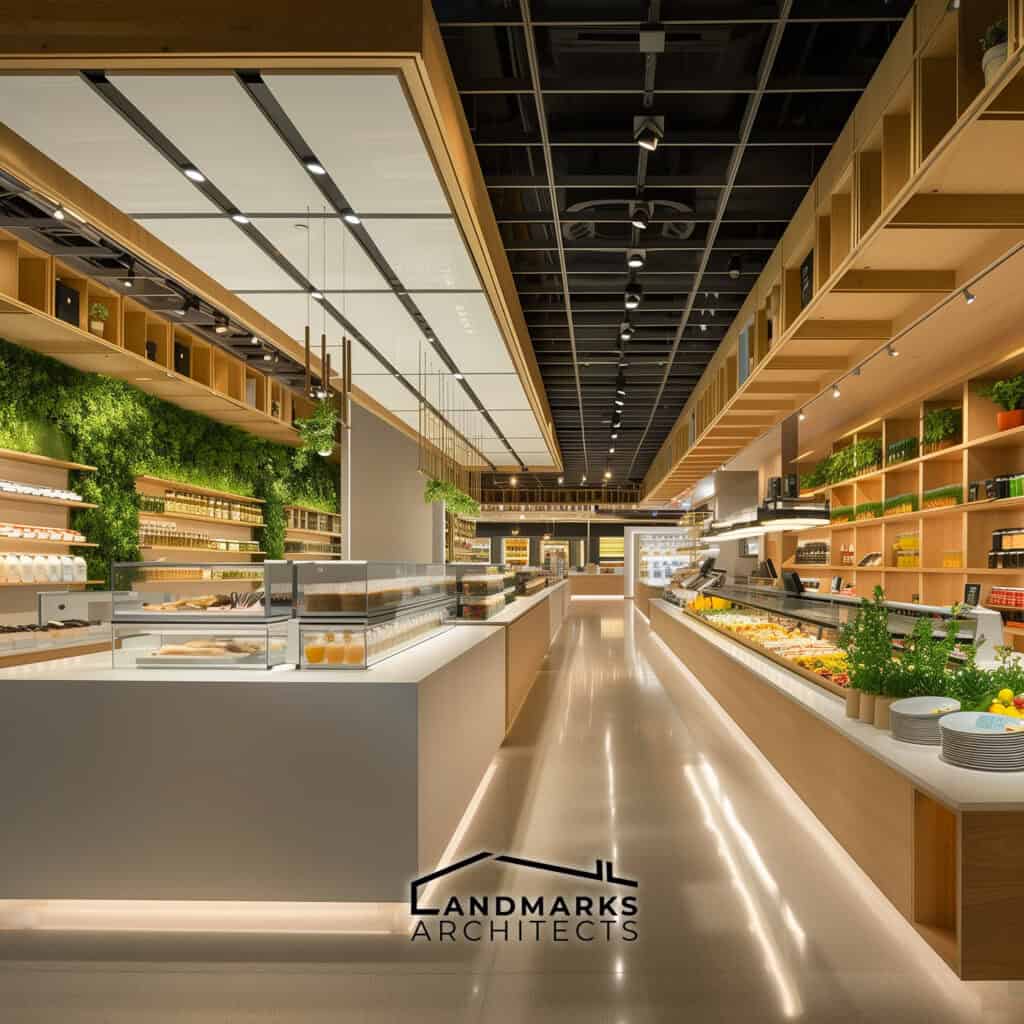
An example of an innovative retail concept is the use of sustainable materials and design principles. Features such as energy-efficient lighting, recycled materials, and green roofs create spaces that are both beautiful and environmentally friendly. This approach benefits businesses, employees, and customers alike.
Overall, modern commercial architects create spaces that meet the needs of businesses and users by integrating the latest trends and technologies, resulting in buildings that are efficient, flexible, and inspiring.
5. Mixed-Use Developments
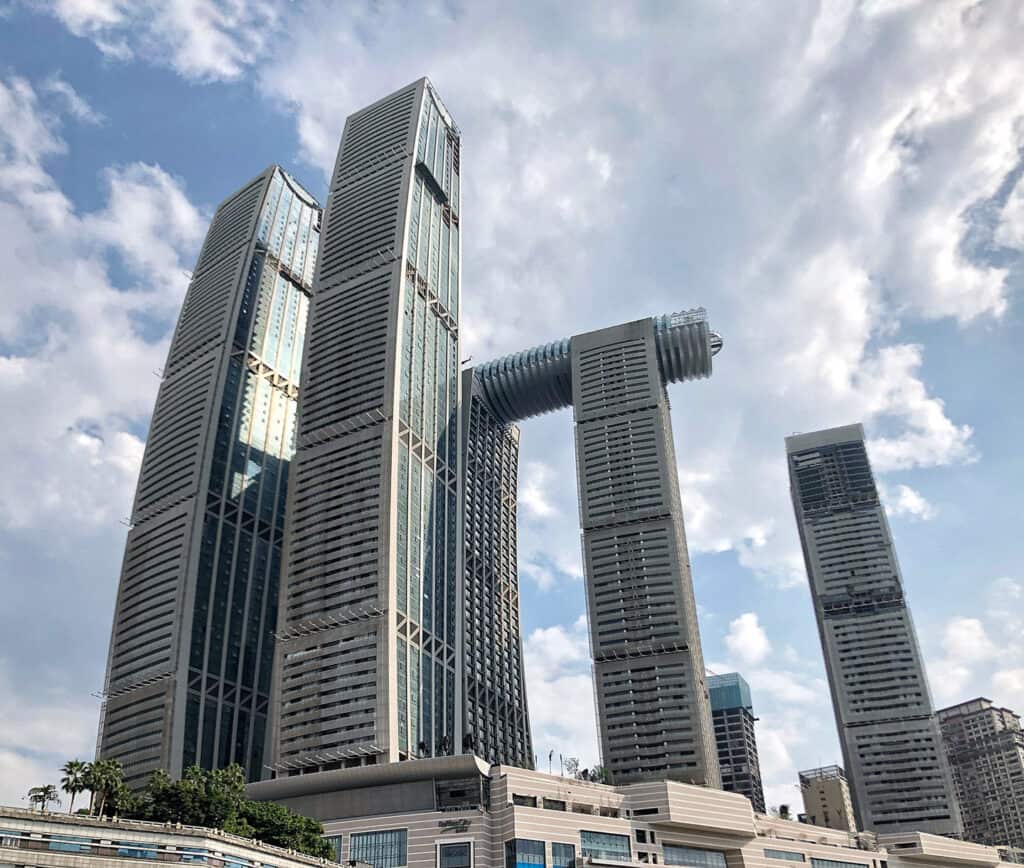
Mixed-use developments are a burgeoning trend in modern commercial architecture, creating multifunctional spaces that encompass retail, dining, and office facilities. For instance, The Crystal by Safdie Architects in Chongqing, China, exemplifies this trend with elevated streets accommodating both commercial and residential purposes.
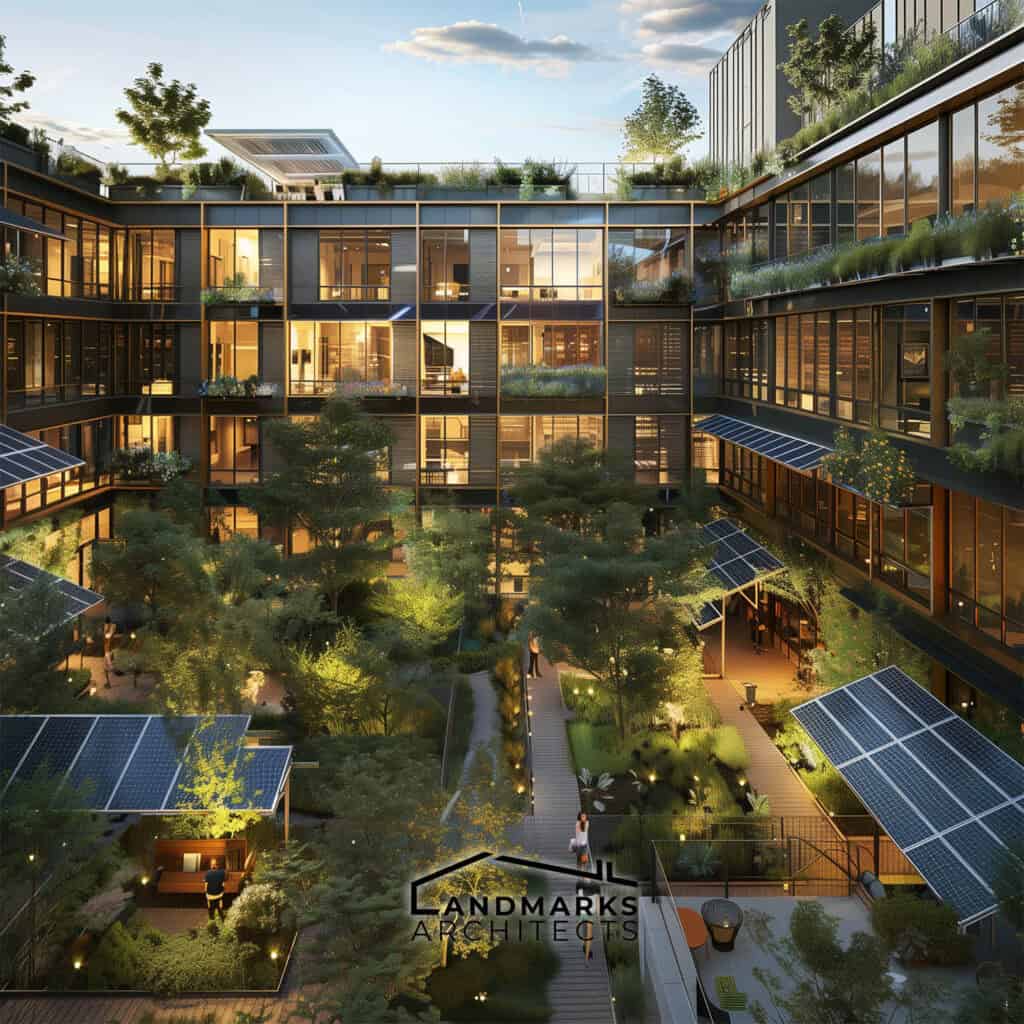
Commercial architects play a pivotal role in enhancing the built environment through energy-efficient design practices. They employ technologies like solar panels and natural lighting to minimize energy consumption while integrating green roofs and landscaped courtyards to optimize natural light and enhance well-being.
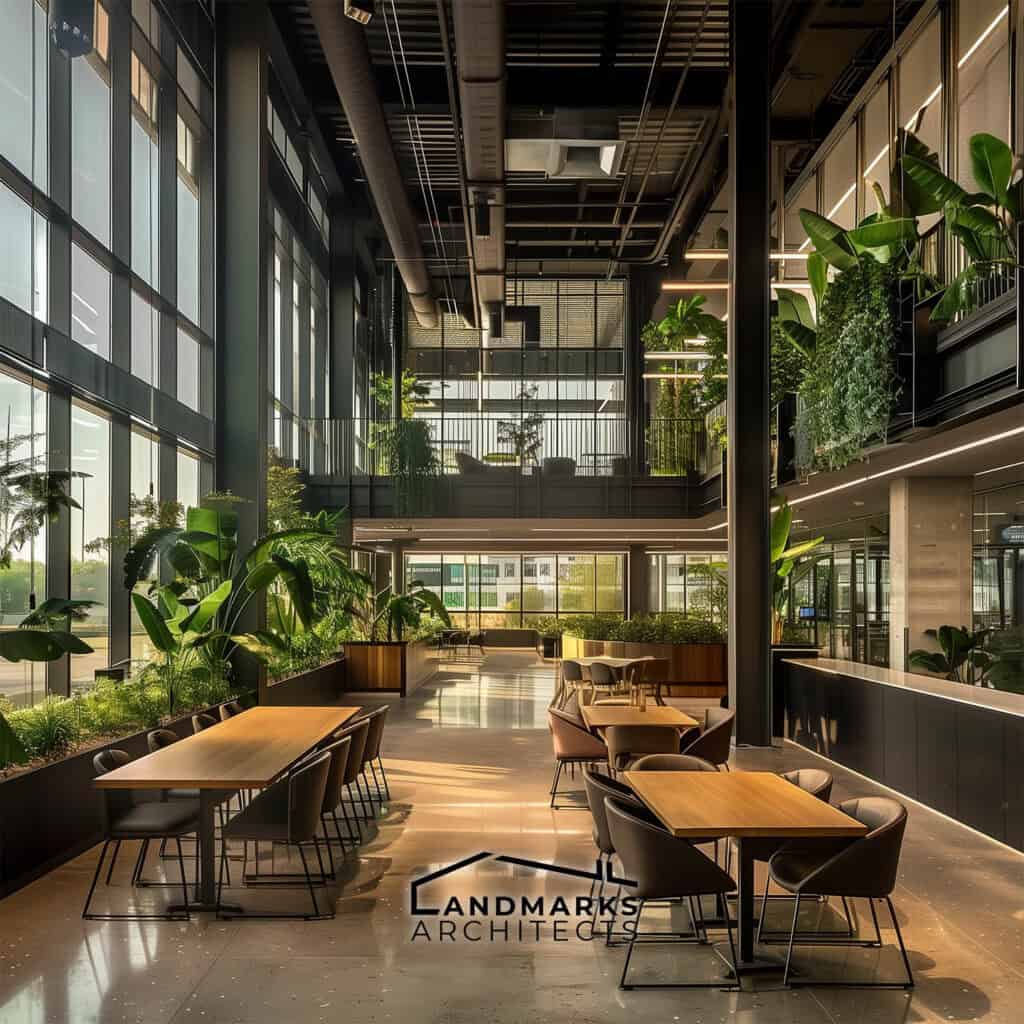
Sustainability has risen to the forefront of commercial architecture priorities. Architects and designers are pioneering new designs and utilizing materials that enhance adaptability and efficiency. Features such as expansive windows and breakout areas are commonplace, fostering creativity and productivity.
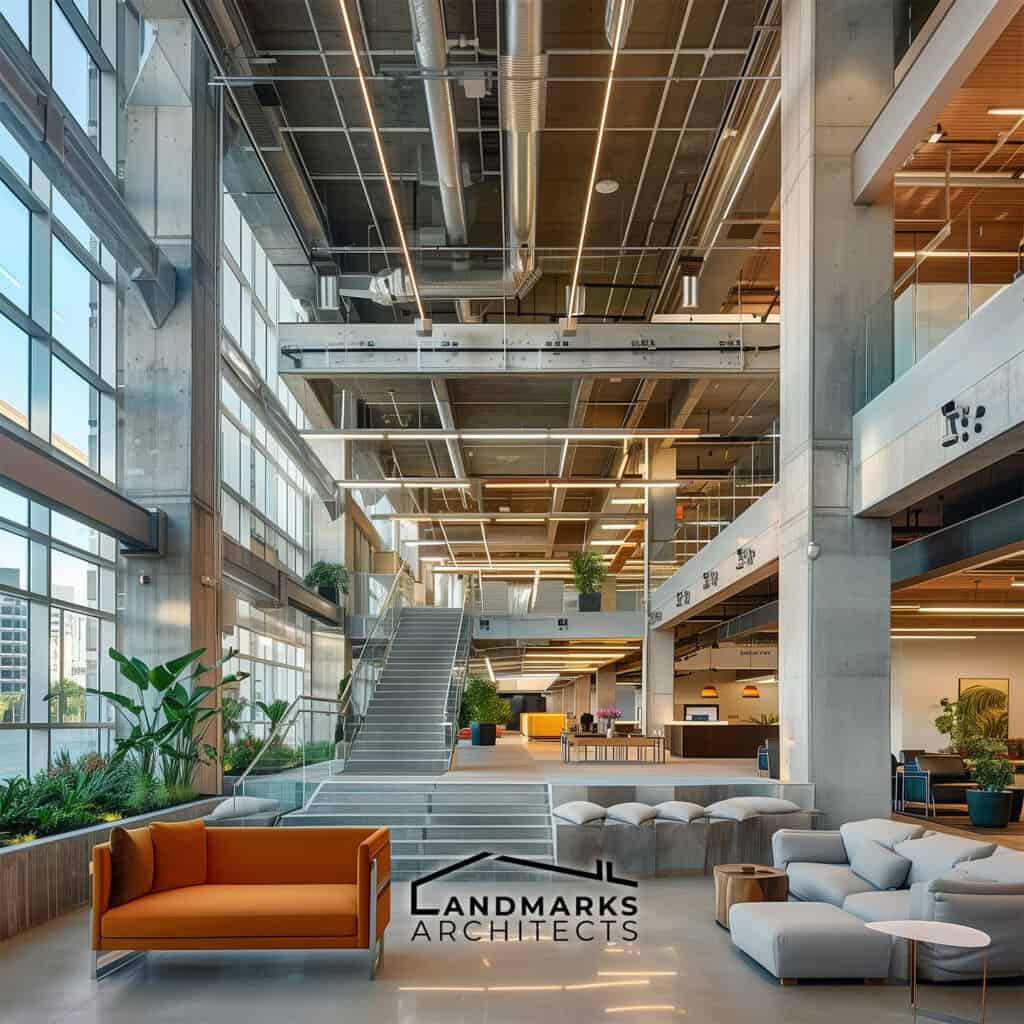
Mixed-use buildings offer flexibility for businesses and developers alike. By embracing current trends in interior design and innovative technologies, architects create commercial spaces that are not only efficient and sustainable but also responsive to the evolving needs of companies and their employees.
6. Biophilic Design
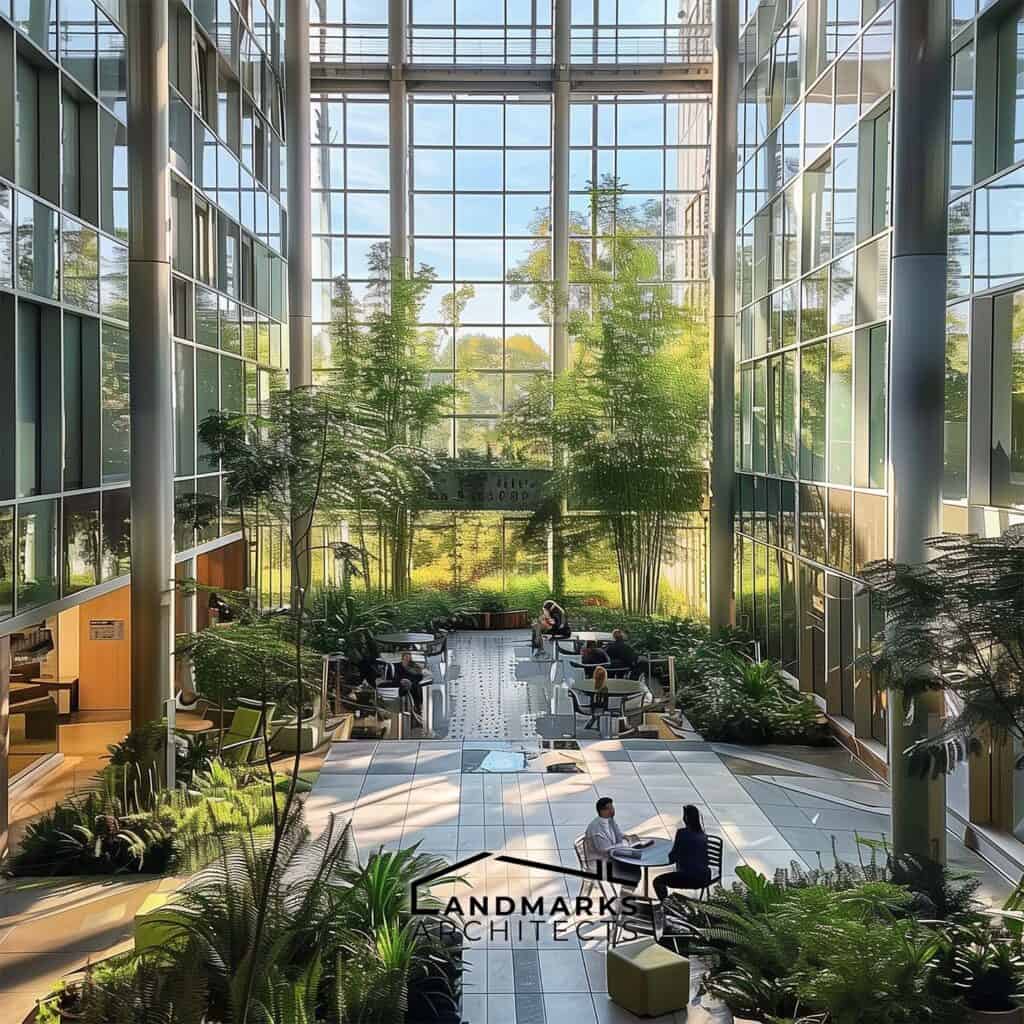
Biophilic design is a rising trend in modern commercial architecture, integrating nature seamlessly into spaces to enhance well-being. Architects prioritize energy efficiency, natural lighting, and sustainable elements, such as green roofs and landscaped courtyards, to create functional and visually appealing environments. Large windows are common, maximizing natural light.
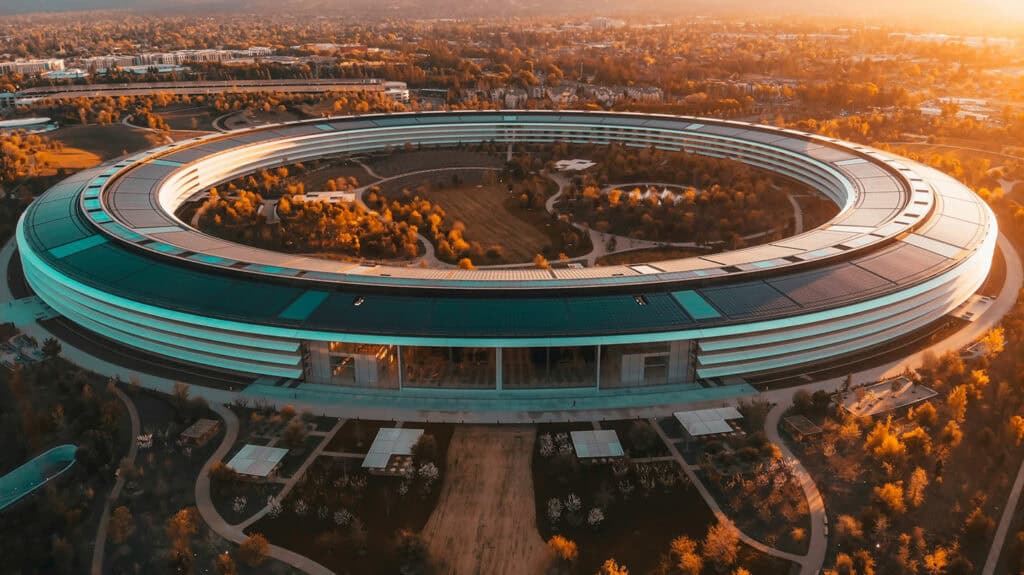
For instance, Apple Park in California exemplifies biophilic design with its doughnut-shaped structure and extensive use of natural light, complemented by a surrounding woodland of 9,000 trees.
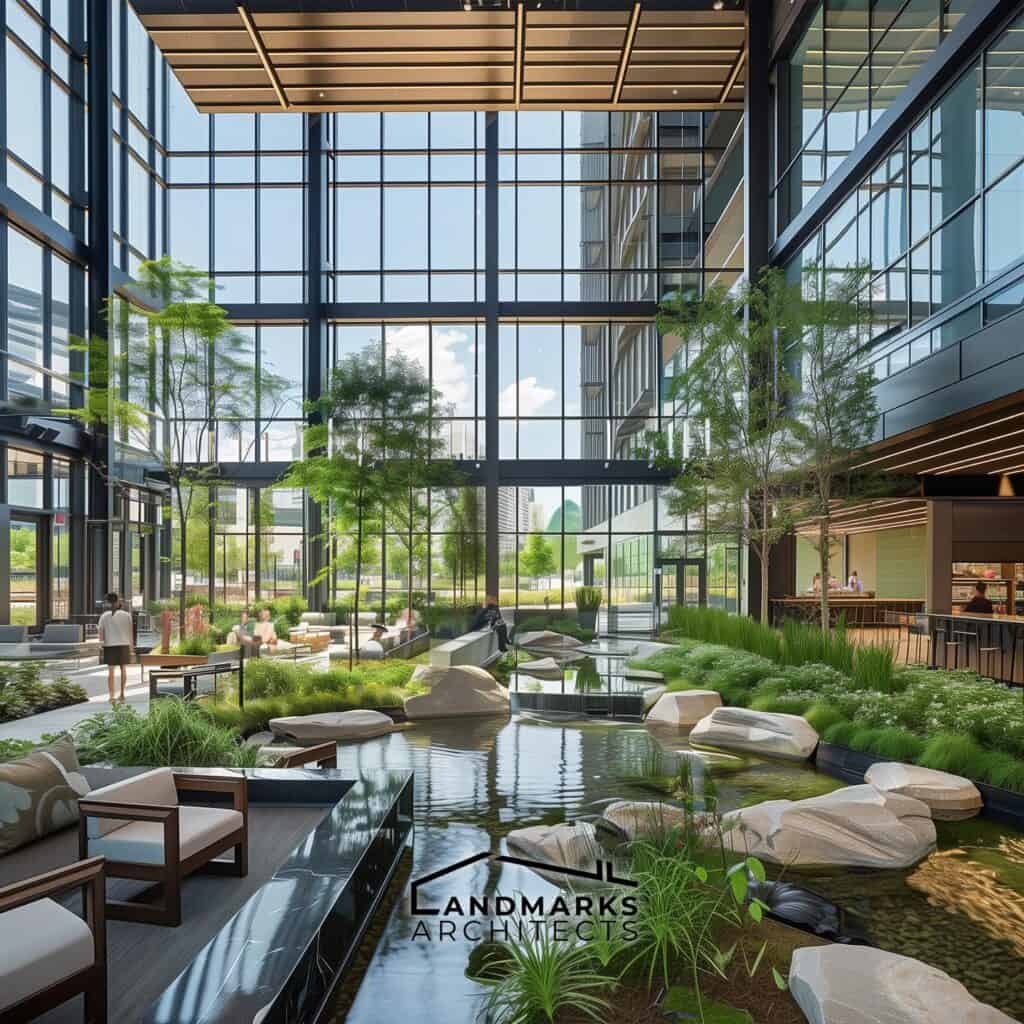
This design approach significantly impacts employee well-being and productivity while promoting sustainability through reduced energy consumption and enhanced business flexibility. With ongoing advancements in technology and materials, commercial architects continually innovate to meet evolving business needs.
7. Adaptive Reuse

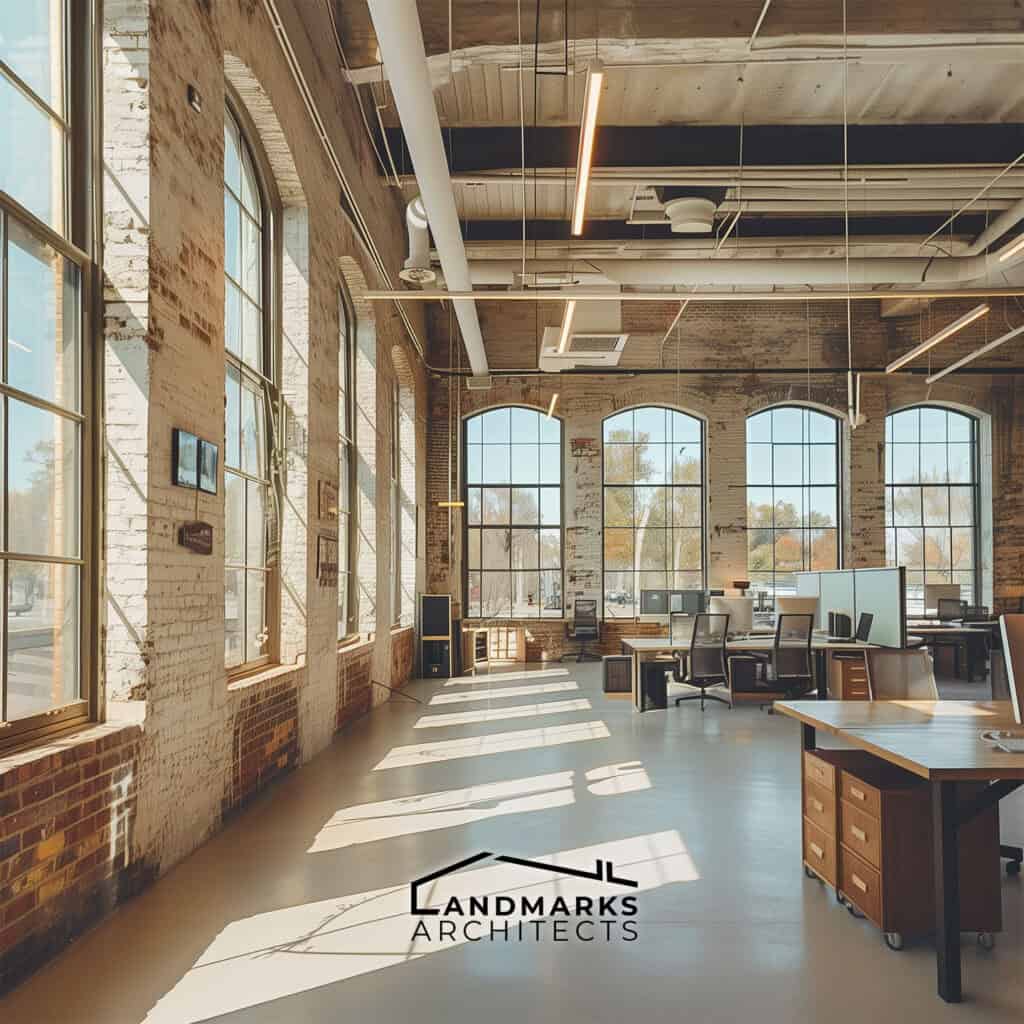
Adaptive reuse in modern commercial architecture revitalizes existing buildings, creating functional and aesthetically pleasing spaces that enhance well-being and productivity. By repurposing structures, architects integrate features like large windows and natural lighting, reducing energy consumption and fostering a comfortable environment.
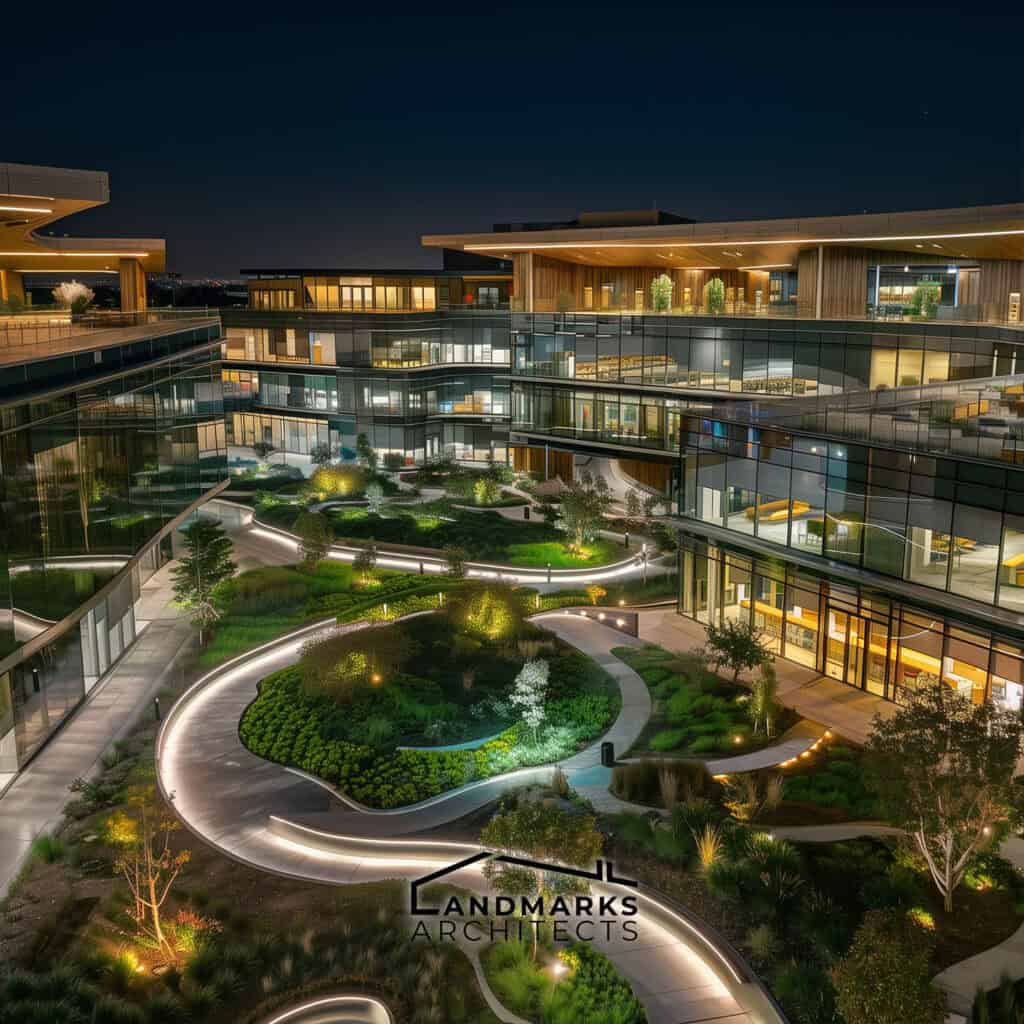
Trends such as green roofs and landscaped courtyards bring nature into urban settings, while sustainable materials and technologies like solar panels and energy-efficient lighting further improve efficiency. Breakout areas and flexible workspaces encourage creativity and collaboration.
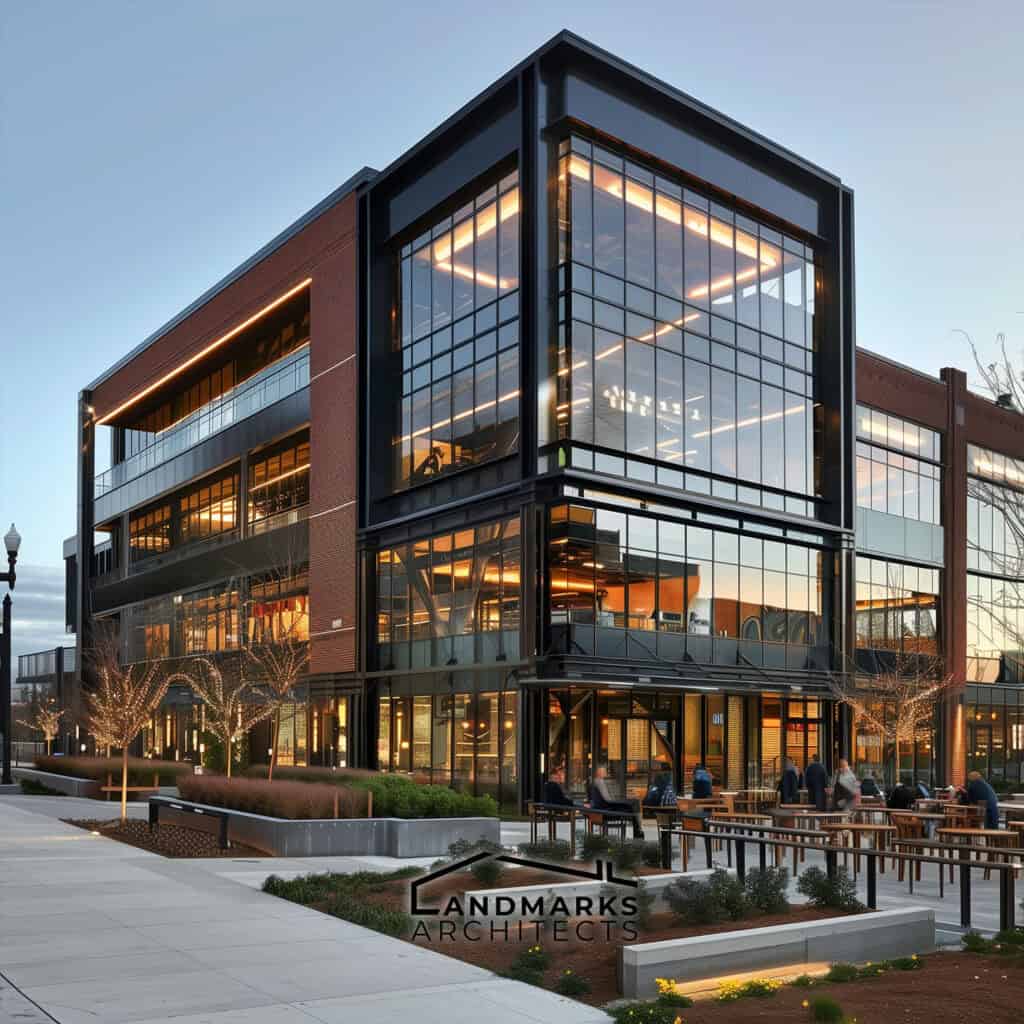
This approach not only supports sustainability but also accommodates diverse needs, blending retail, office, and leisure spaces seamlessly. Adaptive reuse is essential for modern architecture, balancing functionality and environmental impact.
8. Minimalist Aesthetics
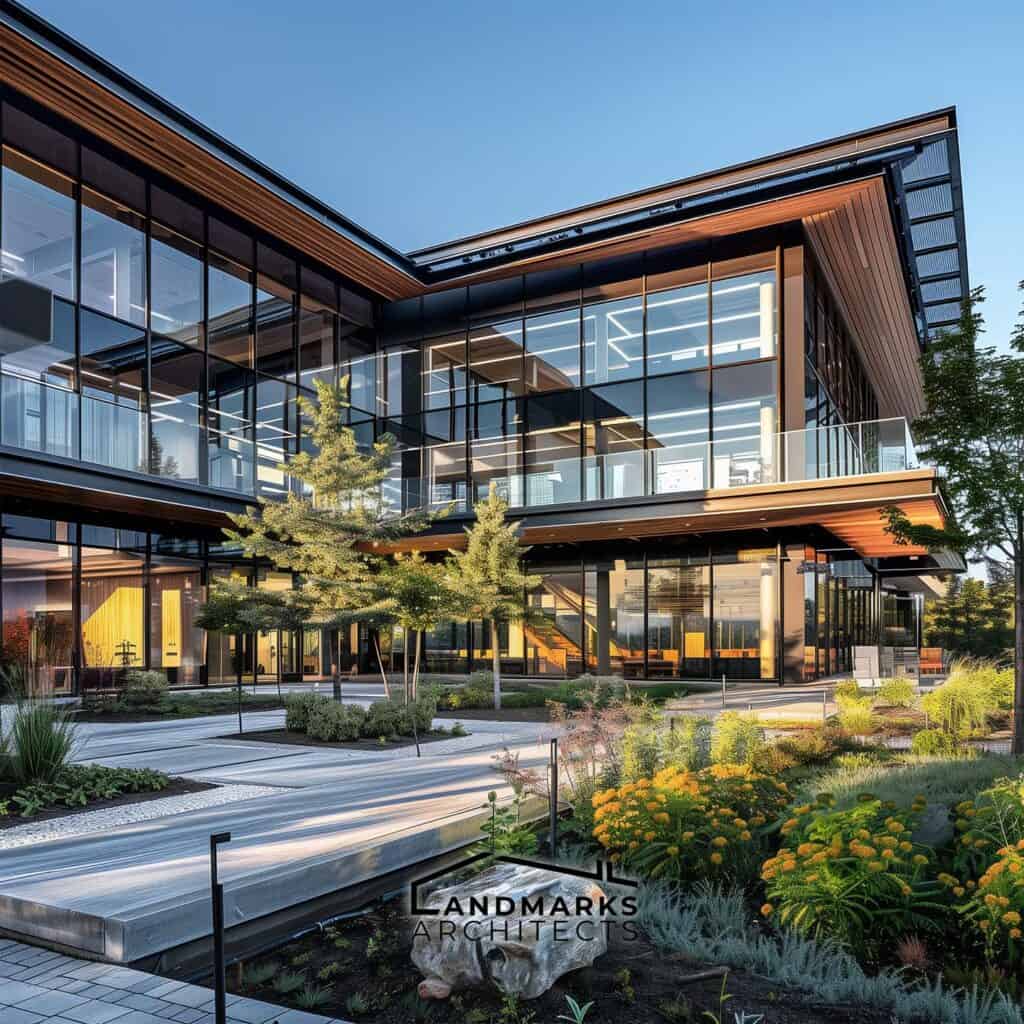
Minimalist aesthetics are increasingly popular in modern commercial architecture, creating functional and visually pleasing spaces that enhance well-being. Large windows and natural light are key features, often complemented by energy-efficient elements like solar panels and green roofs.
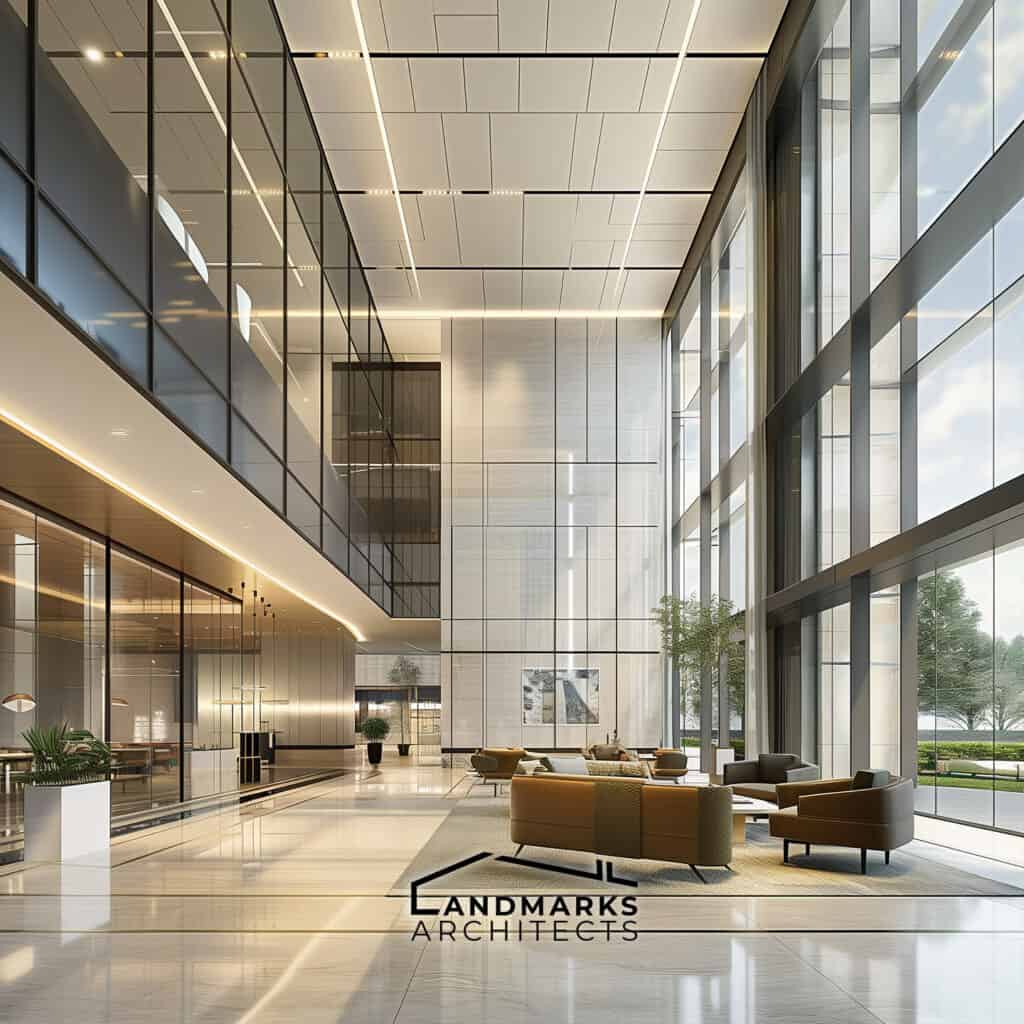
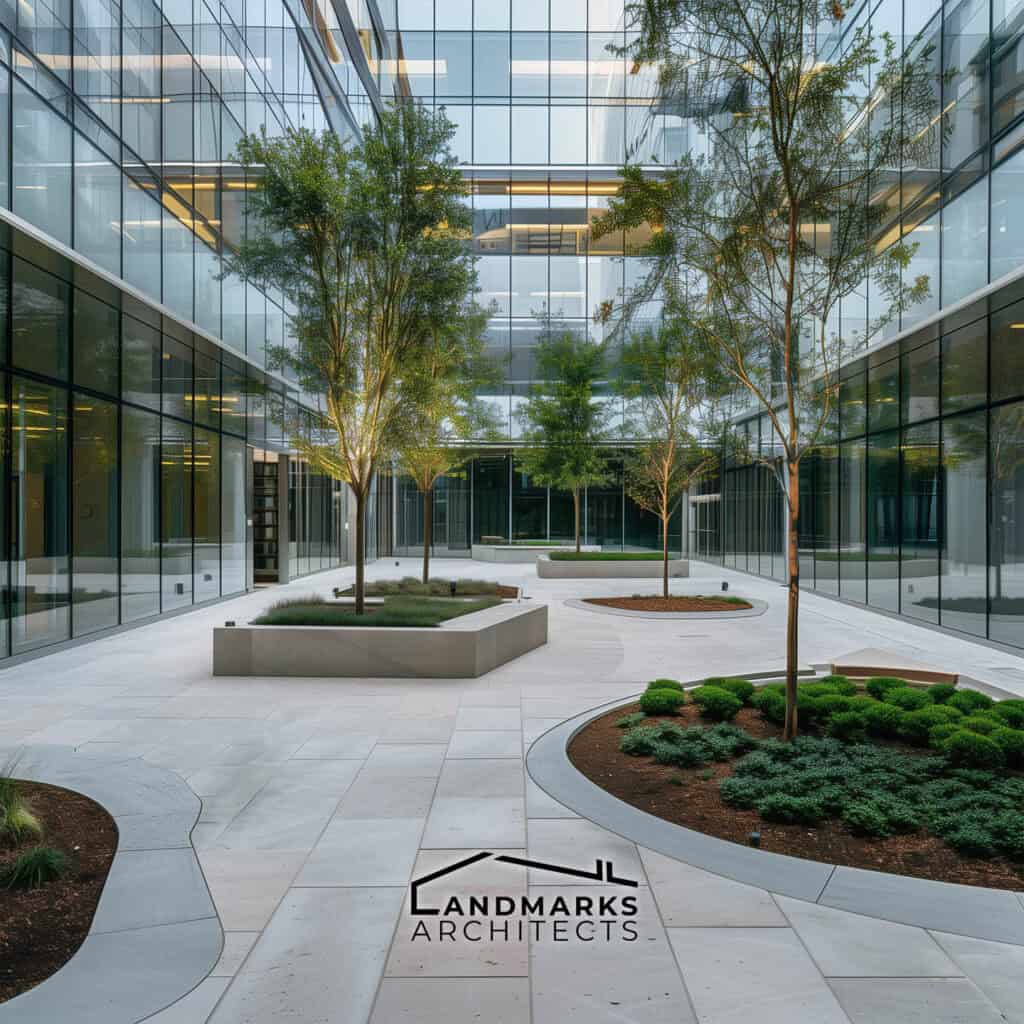
Emerging trends focus on flexibility, incorporating technologies and materials such as glass and stone for a sleek look. Landscaped courtyards and breakout areas are common in office and mixed-use buildings, enhancing comfort and inspiration.
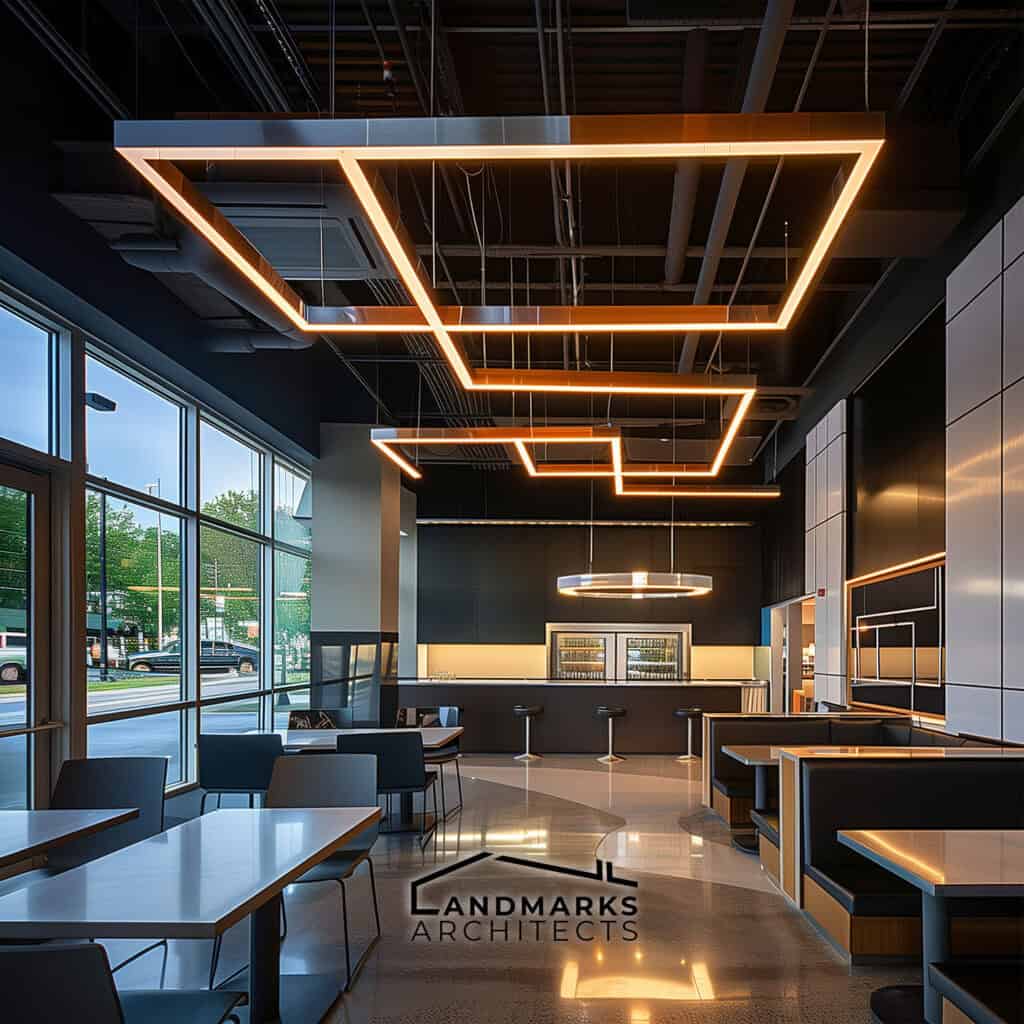
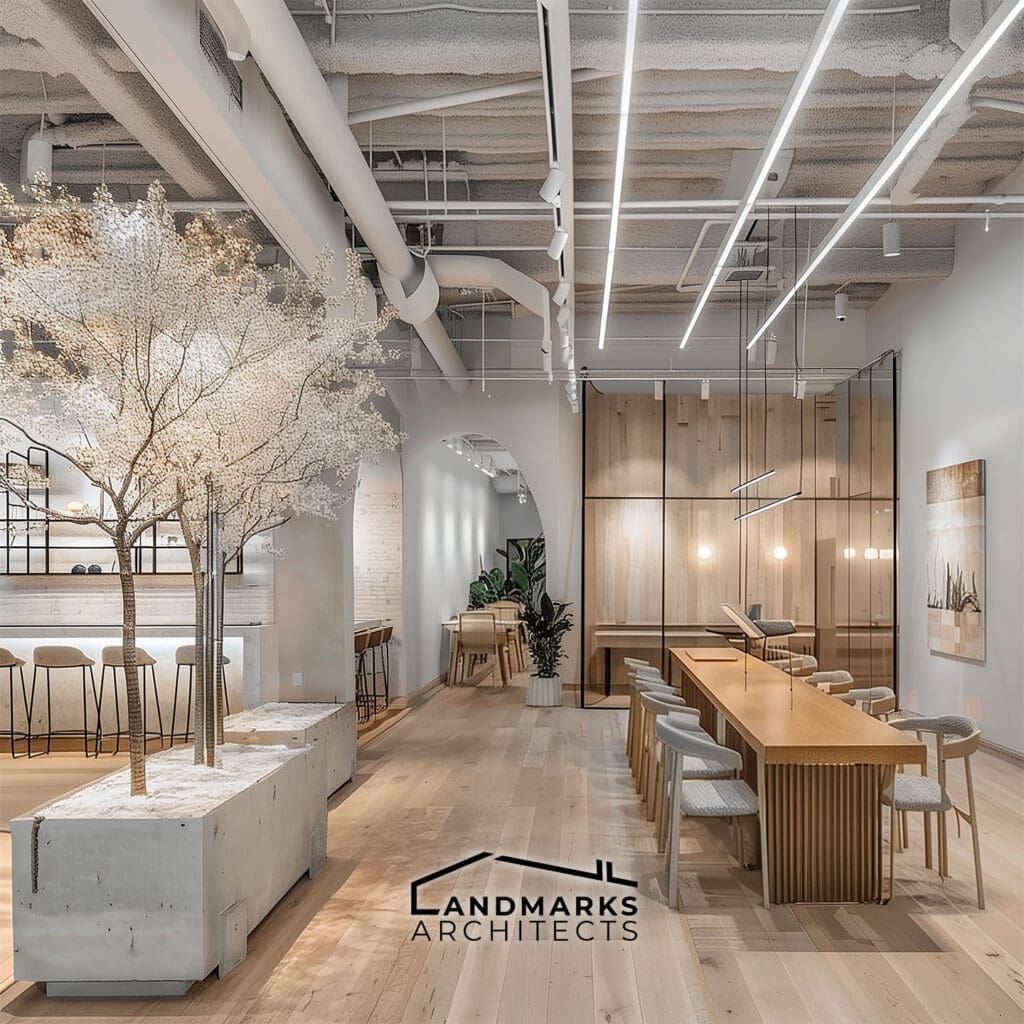
Integrating restaurants and retail spaces within office environments offers greater workplace flexibility. Additionally, smart lighting and HVAC systems improve energy efficiency and productivity, making minimalist design crucial for sustainable and efficient commercial spaces.
9. Iconic Cultural Spaces
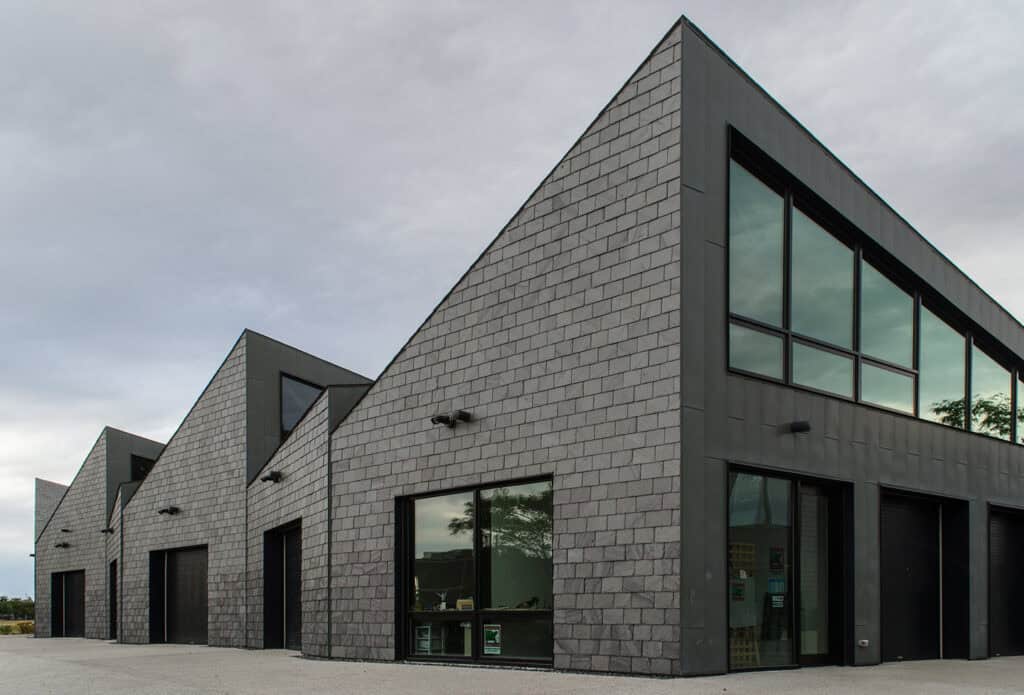
Commercial architects are pivotal in shaping visually appealing spaces that significantly enhance people’s well-being. The WMS Boathouse at Clark Park, designed by Studio Gang Architects, stands as an iconic cultural space, epitomizing Chicago architecture. This project exemplifies contemporary trends in commercial architecture, emphasizing abundant natural light and incorporating sustainable elements such as green roofs and solar panels to minimize energy usage.
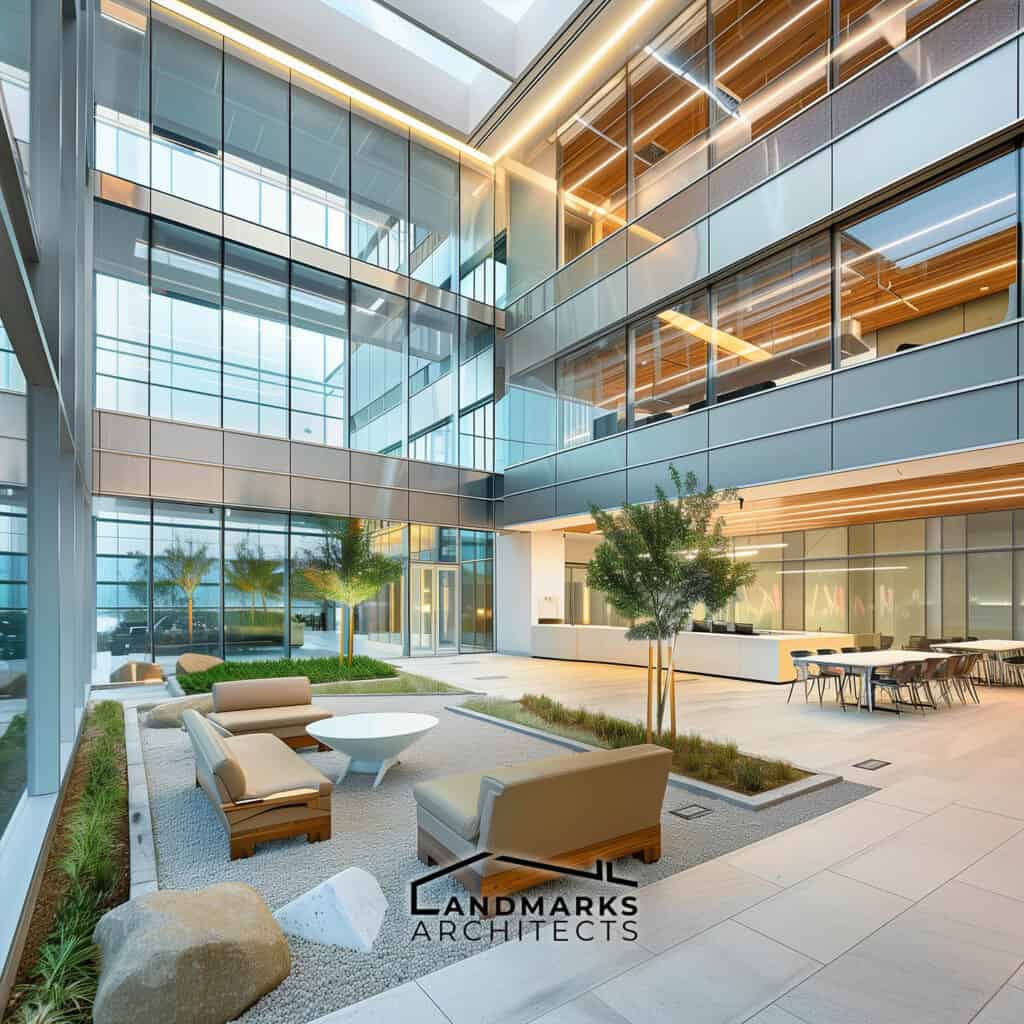
Many commercial architects are also incorporating emerging trends like landscaped courtyards and rooftop gardens to bring nature into everyday life. They are also using new technologies and materials to create functional and efficient spaces that provide greater flexibility for businesses. For instance, large windows and breakout areas are becoming increasingly popular in office buildings to create a more collaborative and productive environment for employees.
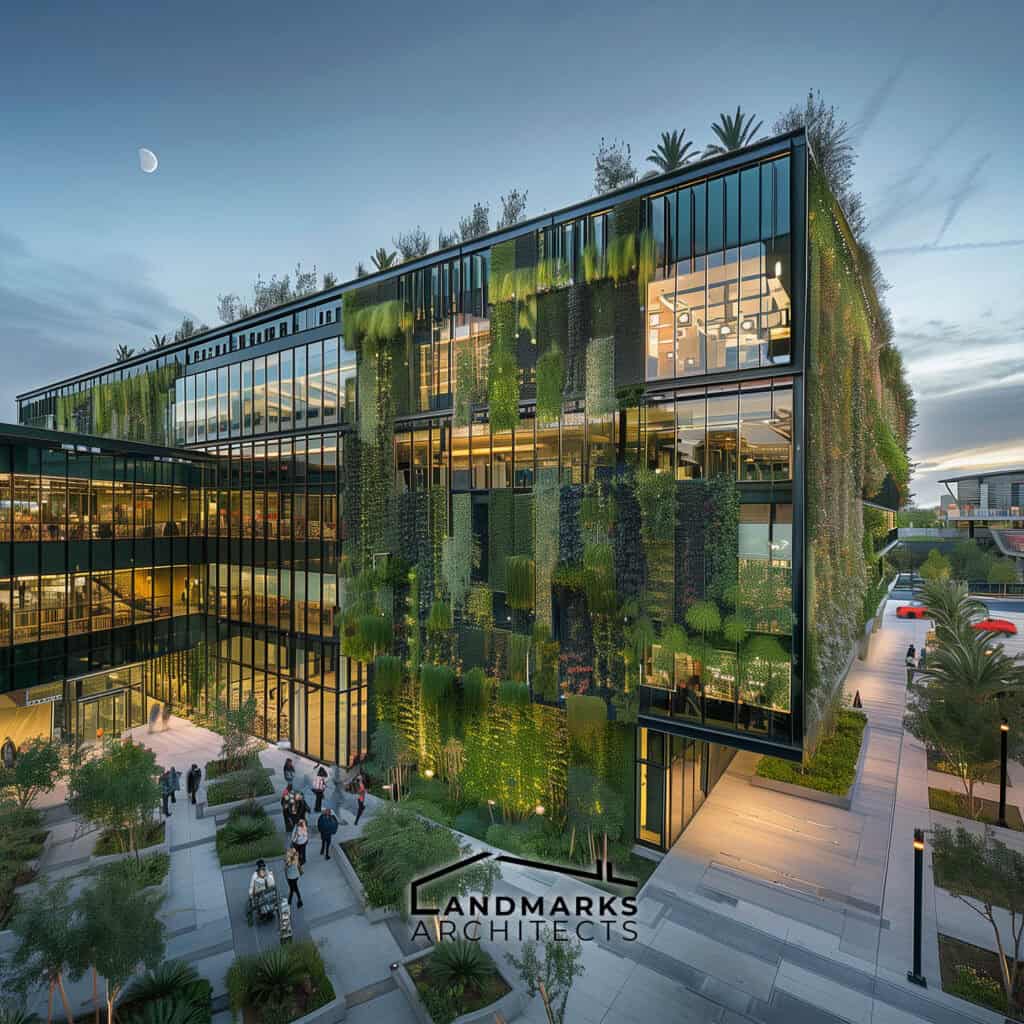
In recent years, commercial architects have been inspired by the concept of sustainability and are using it as a guiding principle in their designs. They are creating mixed-use buildings that serve multiple purposes, such as retail stores, restaurants, and office spaces, to reduce the need for transportation and promote walkability. They are also using sustainable materials and energy-efficient design to reduce environmental impact and create a more sustainable built environment.
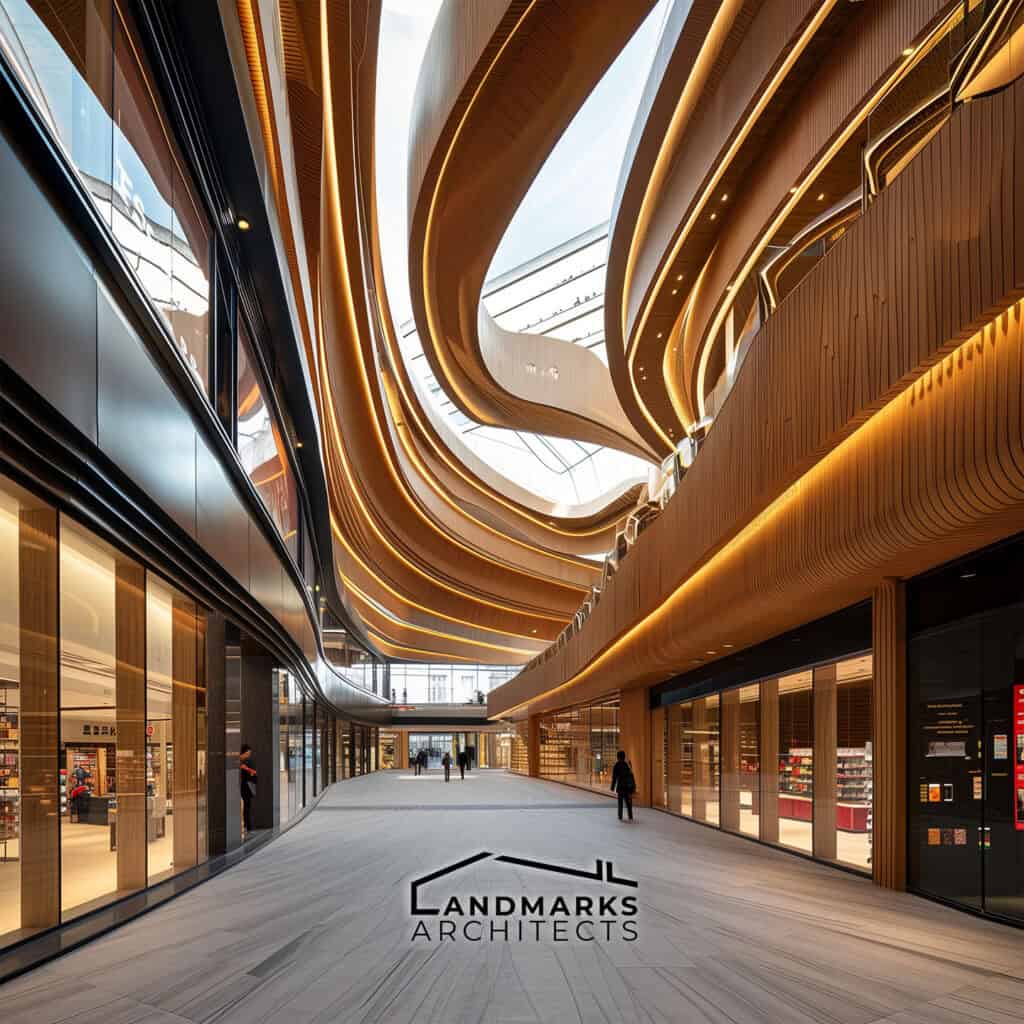
Overall, the architects of modern commercial design are creating iconic cultural spaces that are not only visually stunning but also promote well-being and productivity.
10. Luxury Hospitality Design
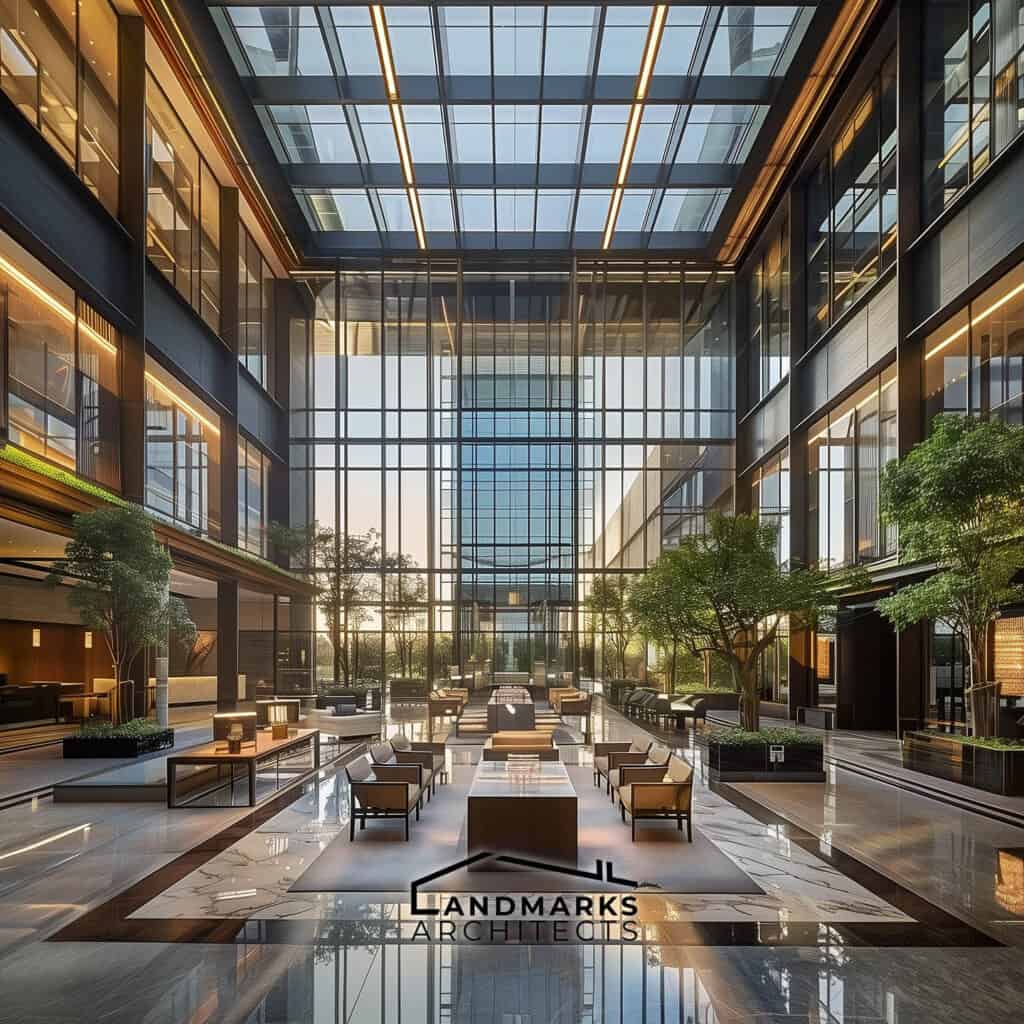
Luxury hospitality design is integral to creating visually appealing spaces that cater to businesses and their clientele. Architects in this field incorporate trends like green roofs, landscaped courtyards, and expansive windows for natural light, emphasizing sustainable practices such as solar panels for energy efficiency.
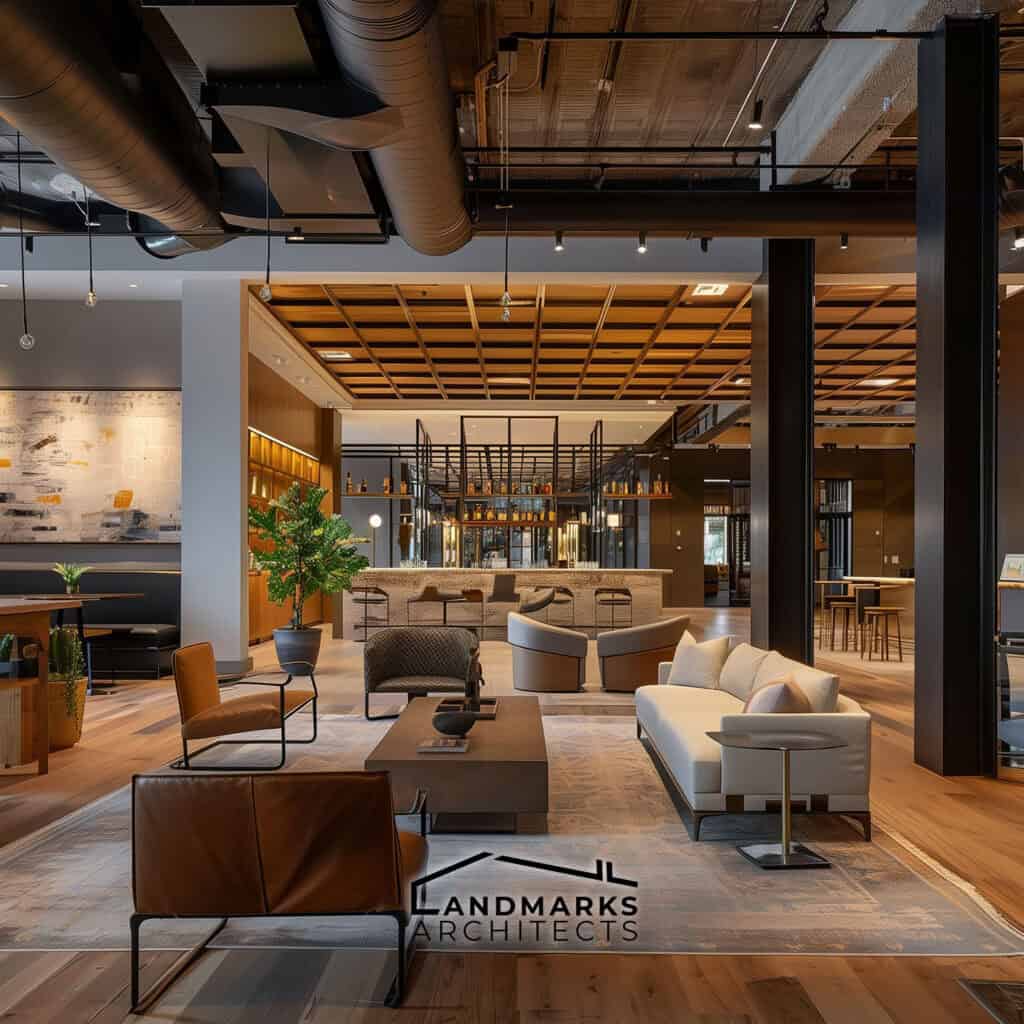
Recent developments in luxury hospitality design prioritize flexibility and technology integration. Architects use materials like glass, stone, and sustainable wood to craft efficient and inspiring environments. Features like breakout areas enhance productivity and well-being, reflecting modern workplace dynamics.

For instance, the Four Seasons Hotel in New York City exemplifies luxury hospitality design with its landscaped courtyard and rooftop garden, enhancing the surrounding environment. Interior spaces focus on natural lighting and open layouts to create a serene ambiance conducive to relaxation and business activities.
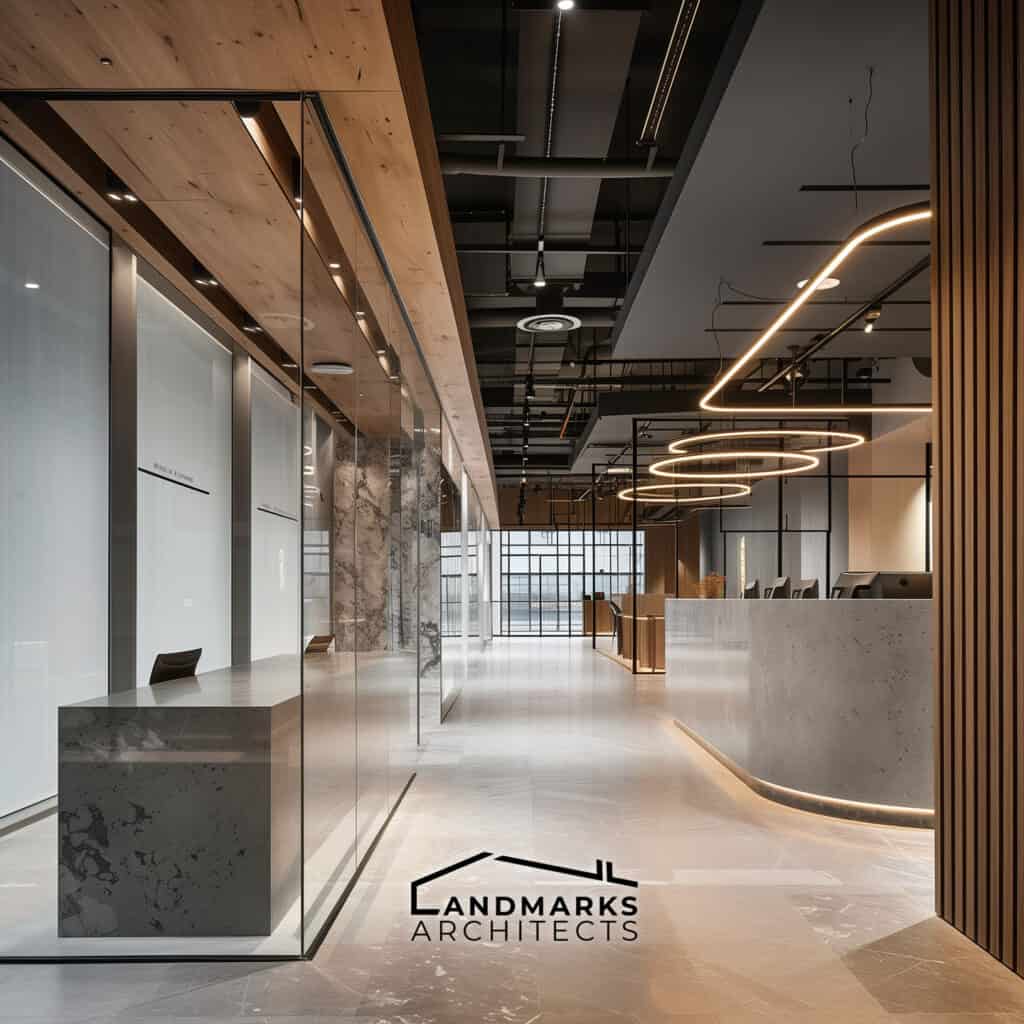
Exploring modern commercial architecture unveils a world of innovation and sustainability, essential for creating spaces that are both functional and visually striking. From integrating natural lighting and green roofs to embracing flexible office layouts and biophilic design, architects are reshaping urban environments to enhance well-being and productivity. These trends not only reflect the latest in architectural innovation but also prioritize energy efficiency and community impact. Embrace these ideas to transform your commercial space into a beacon of modernity and sustainability.










